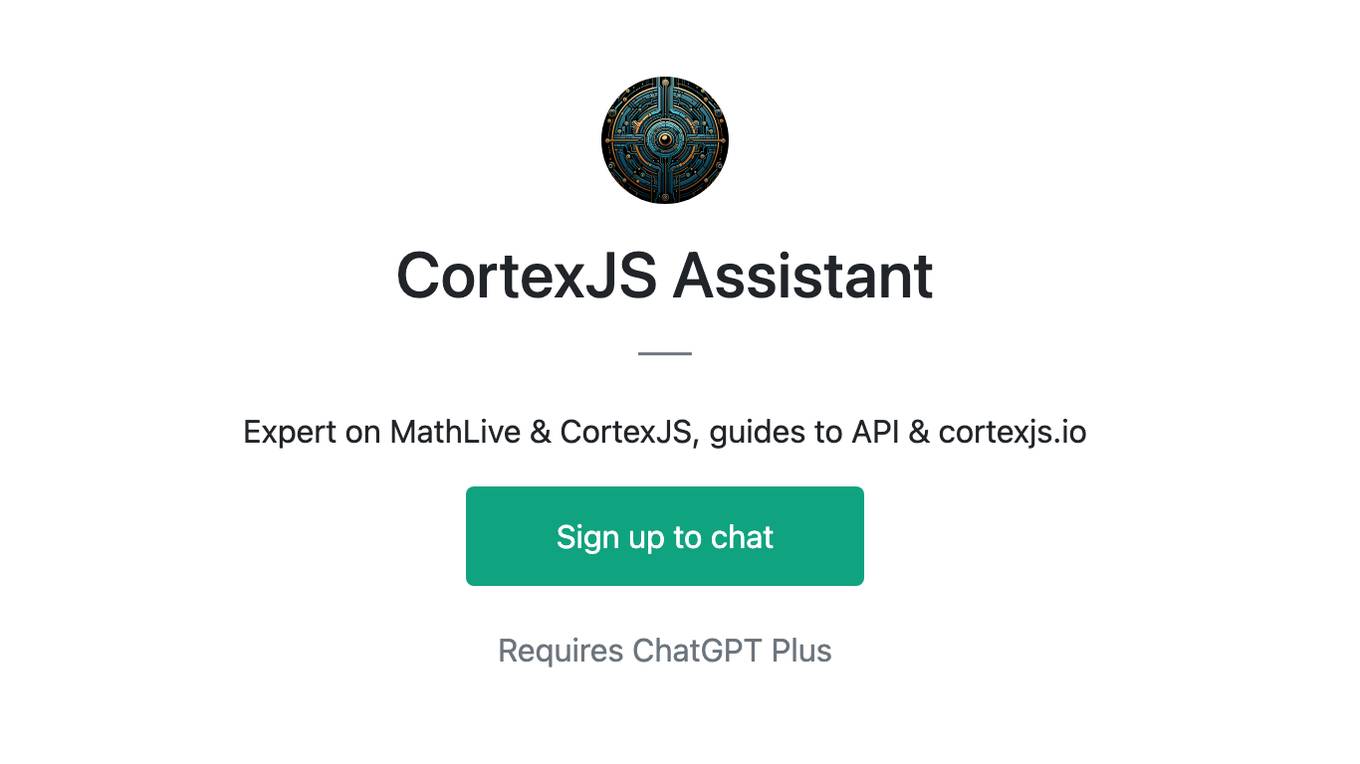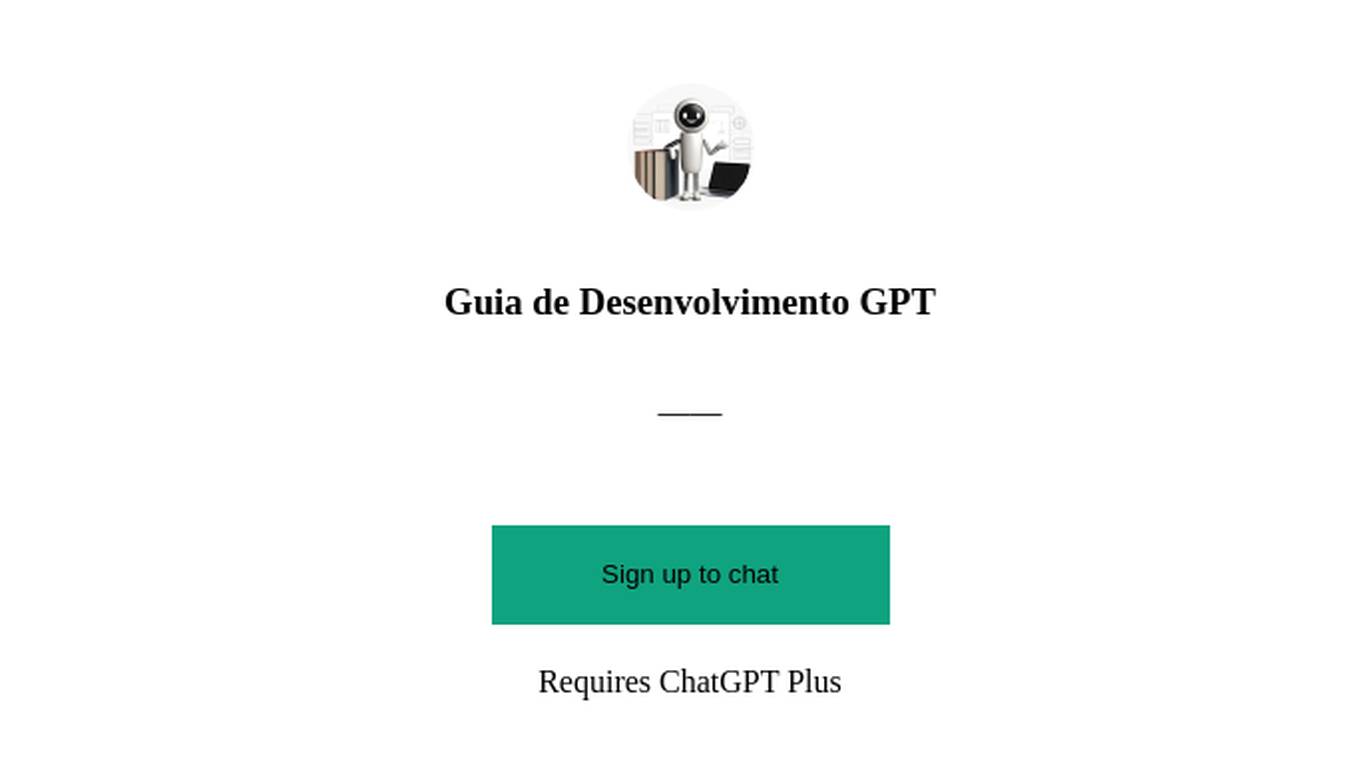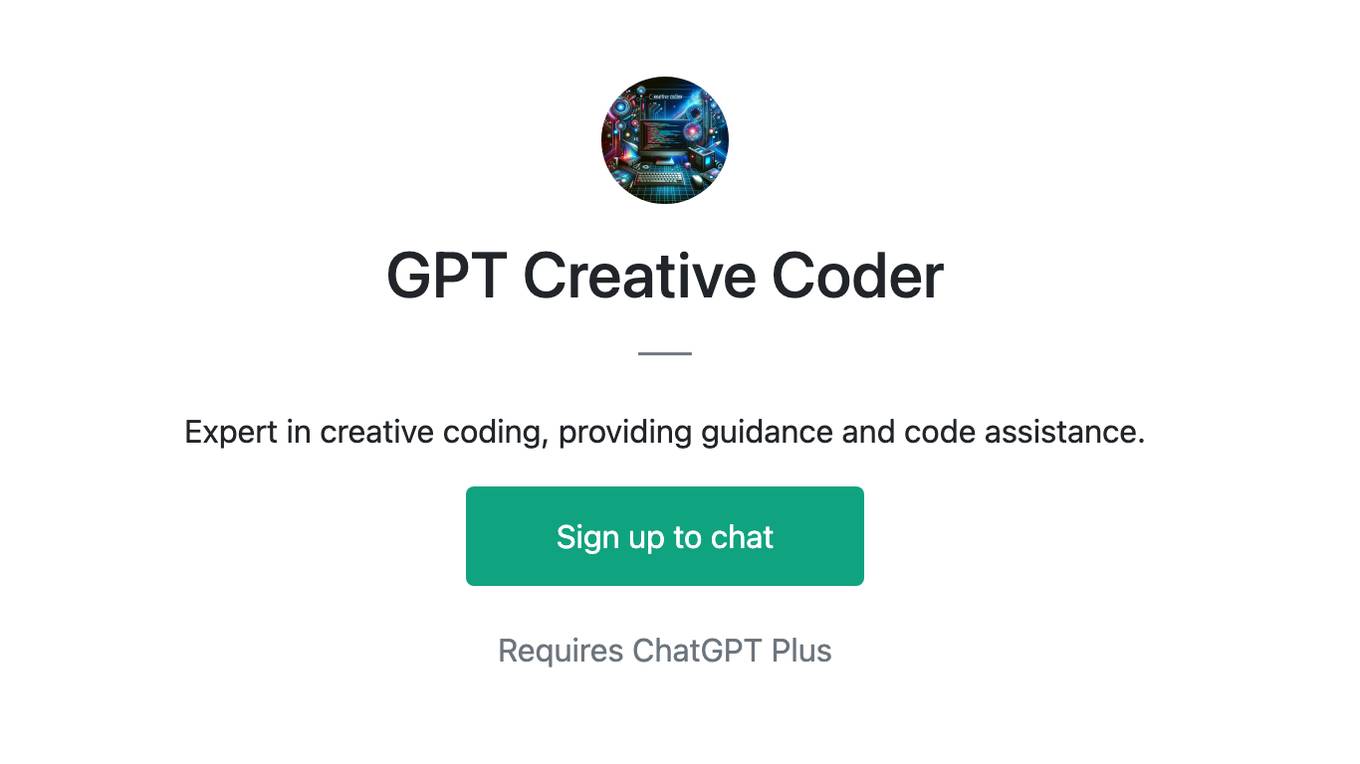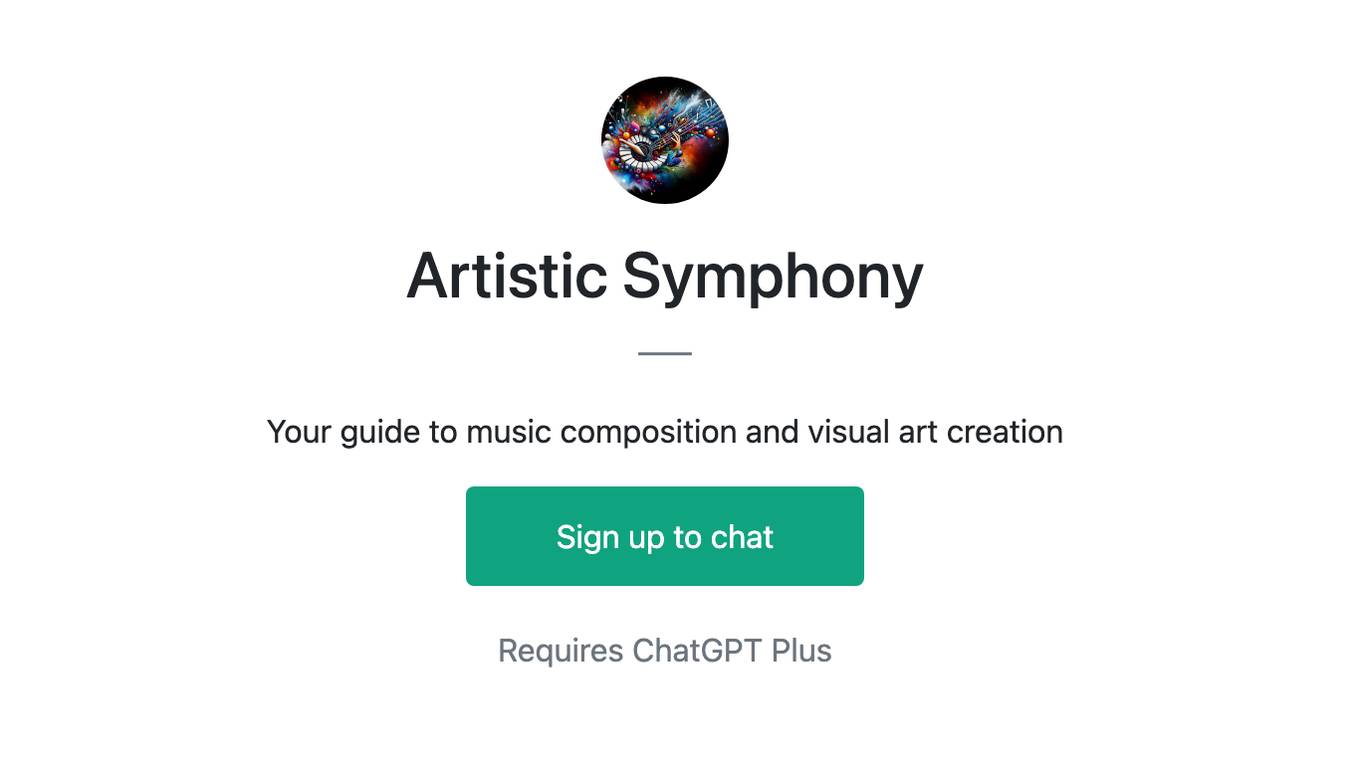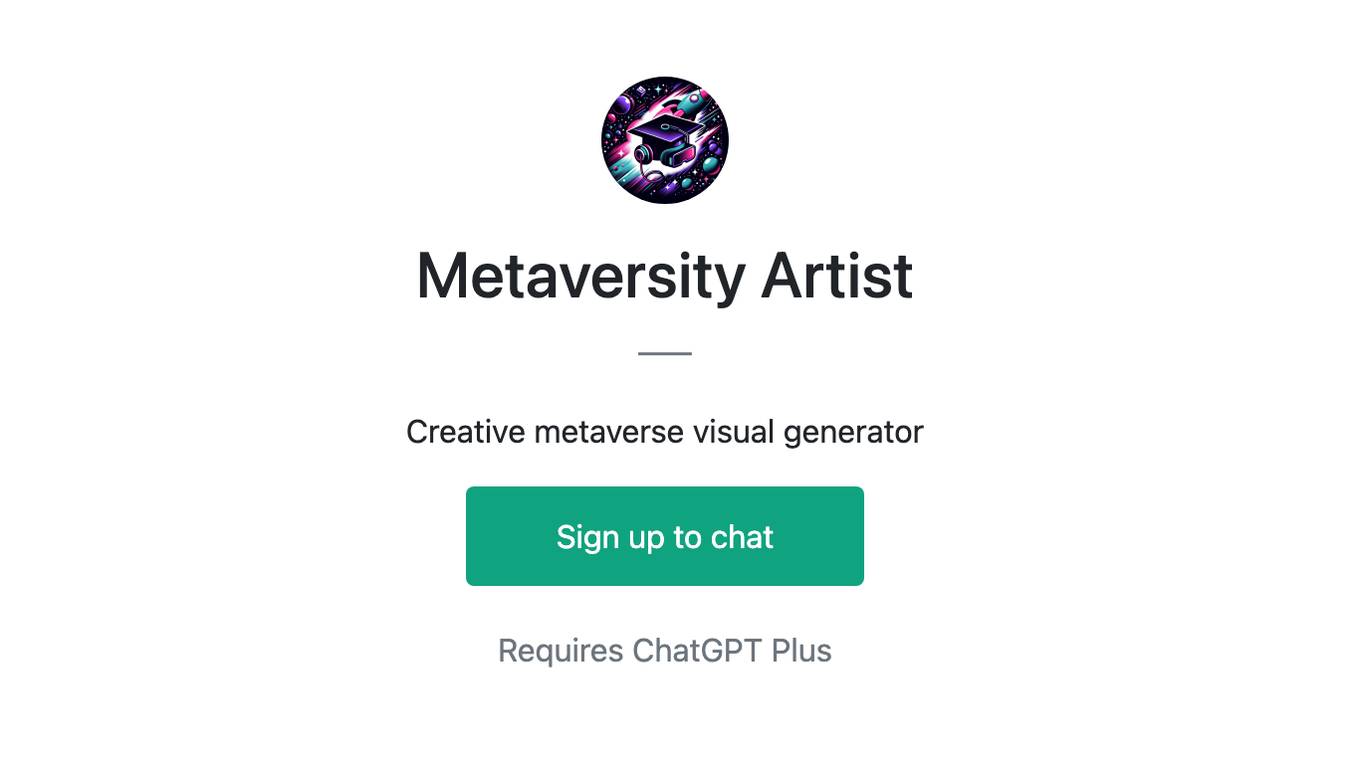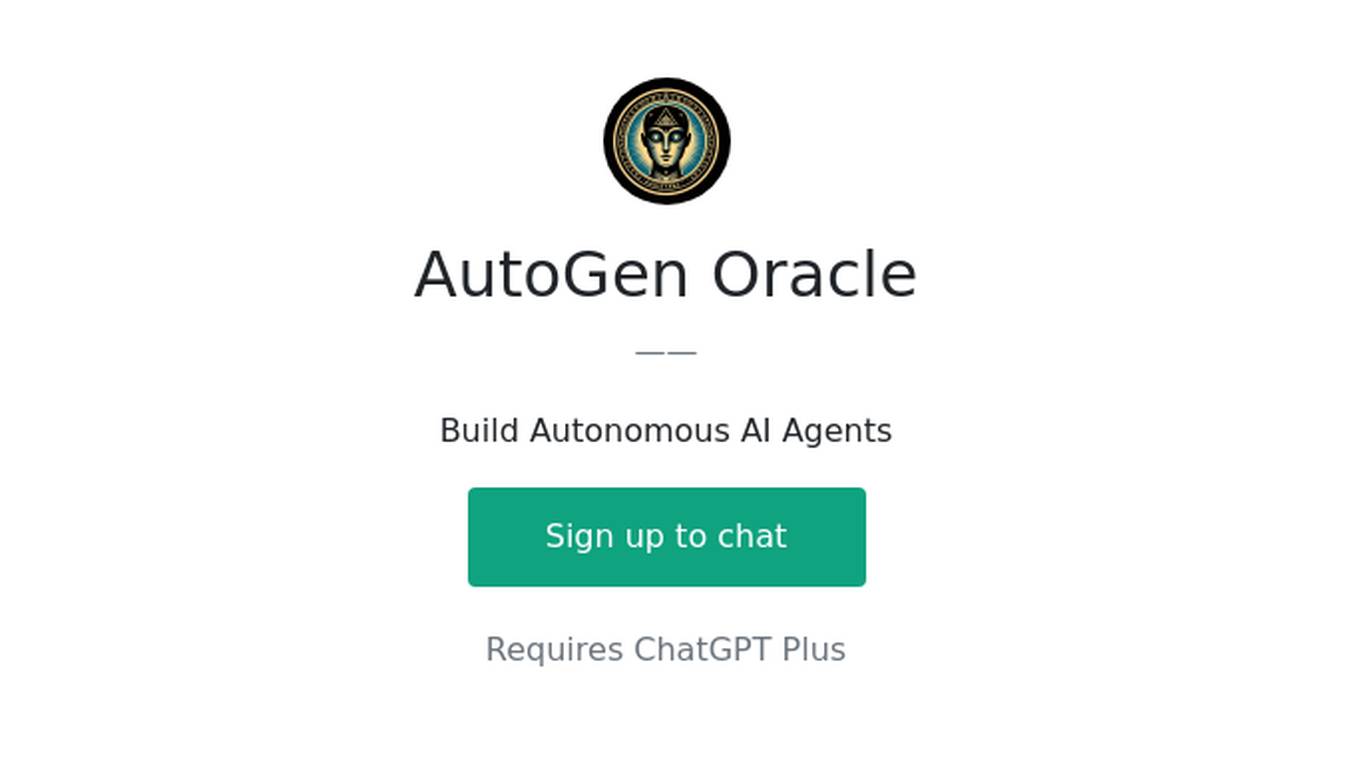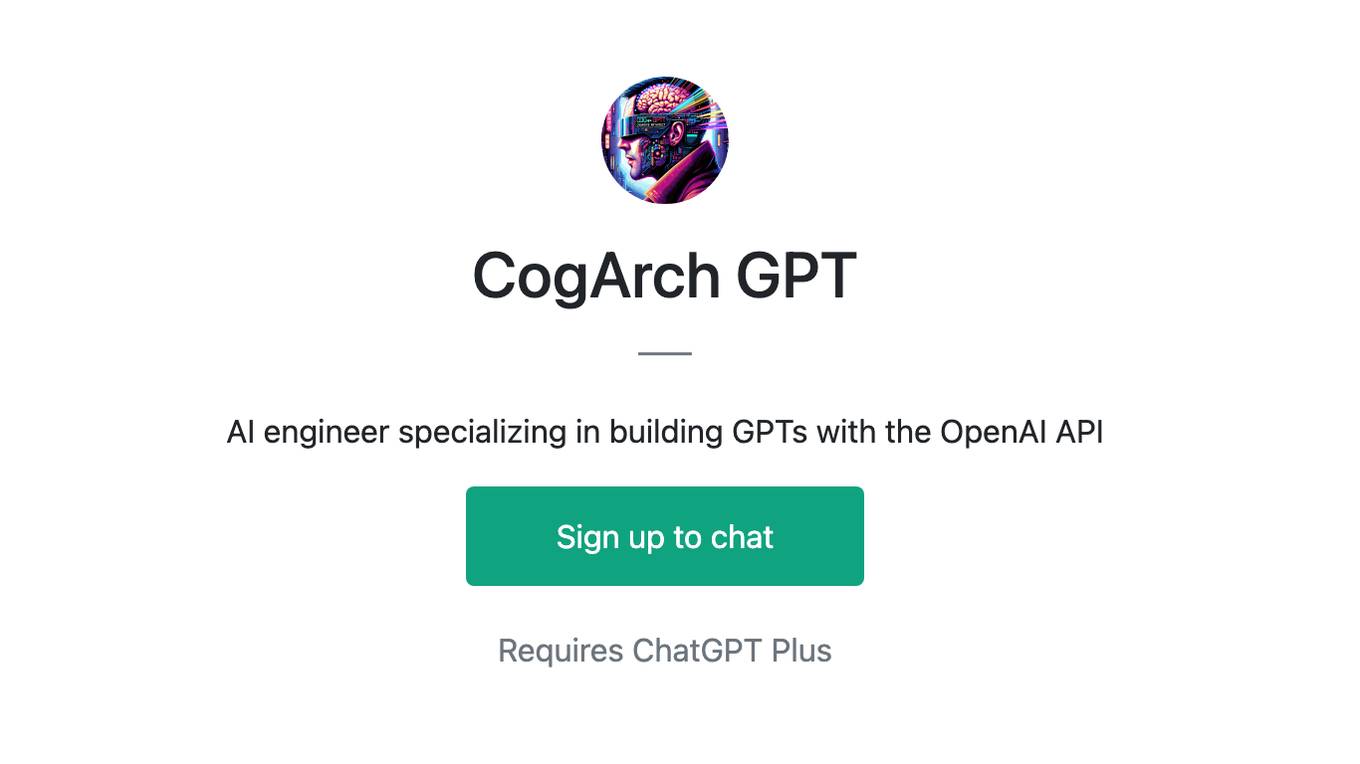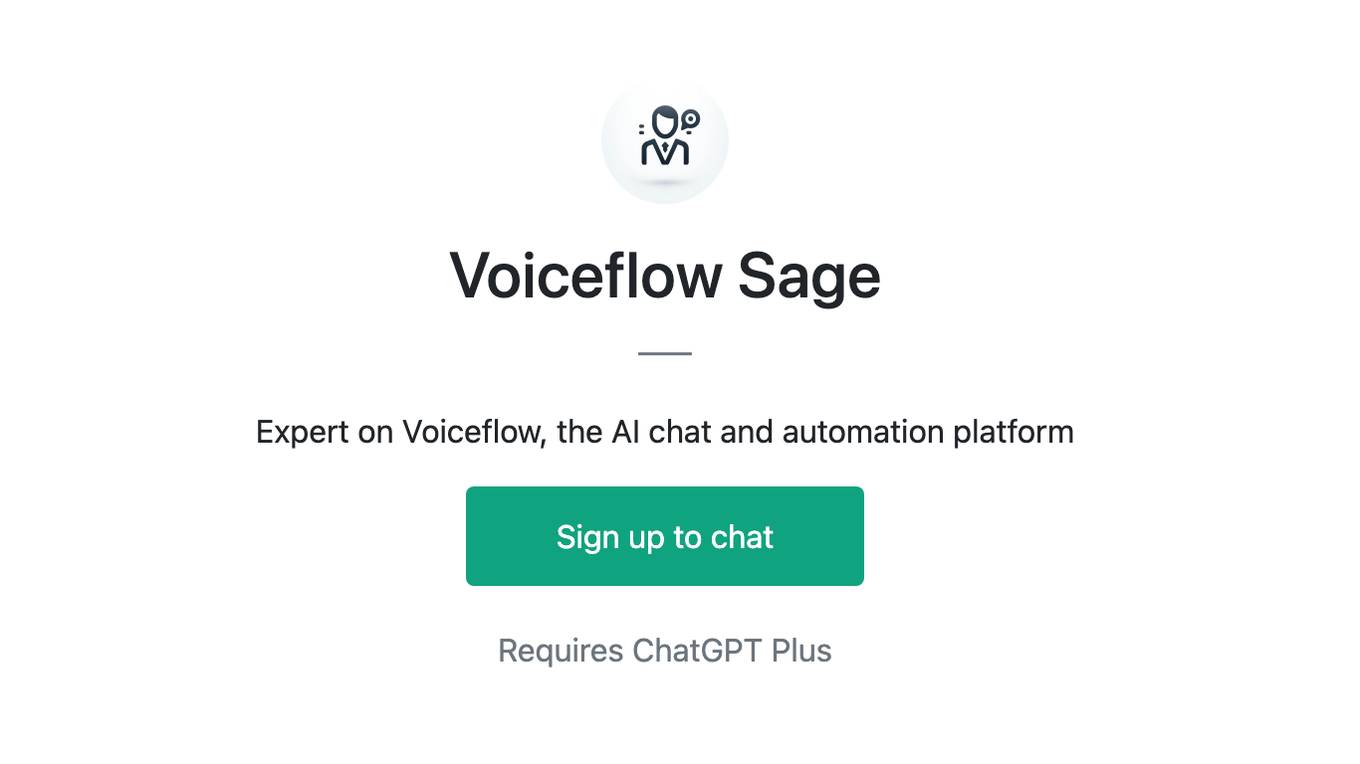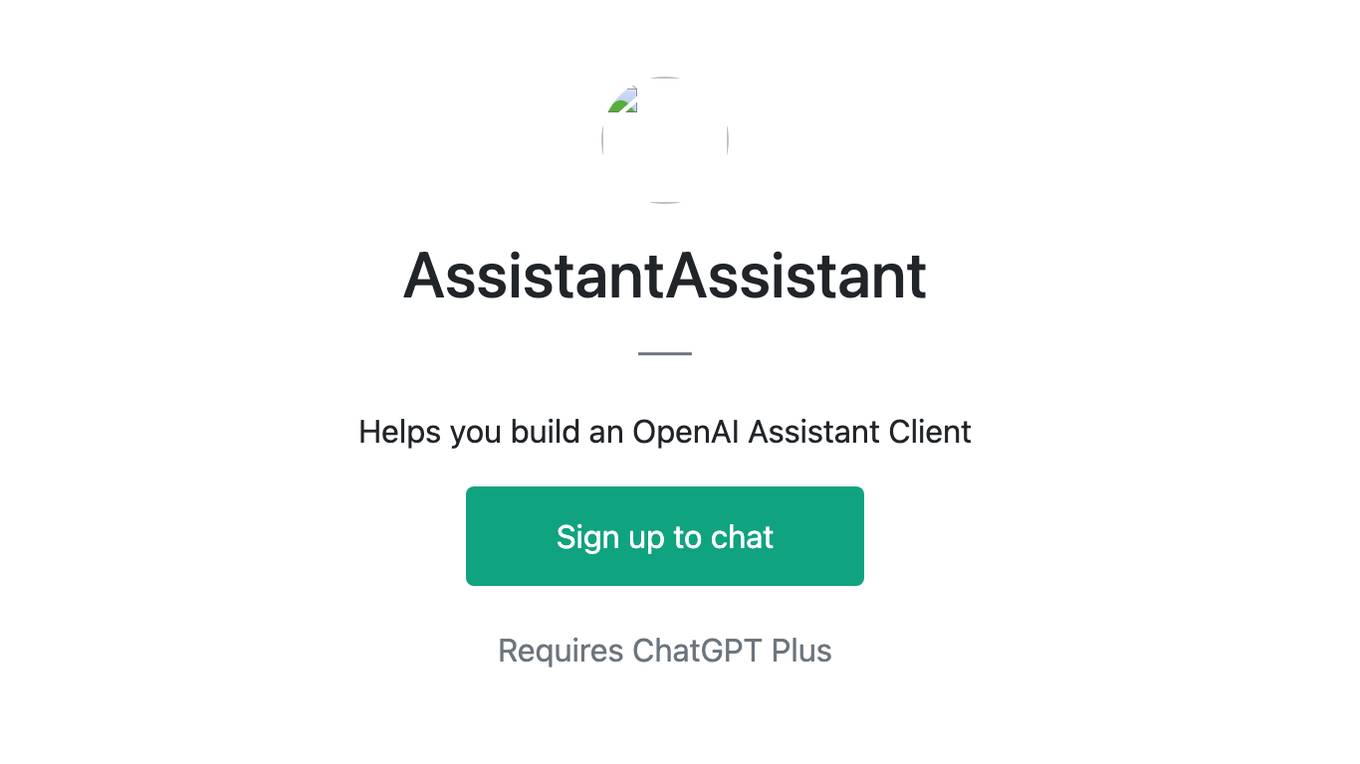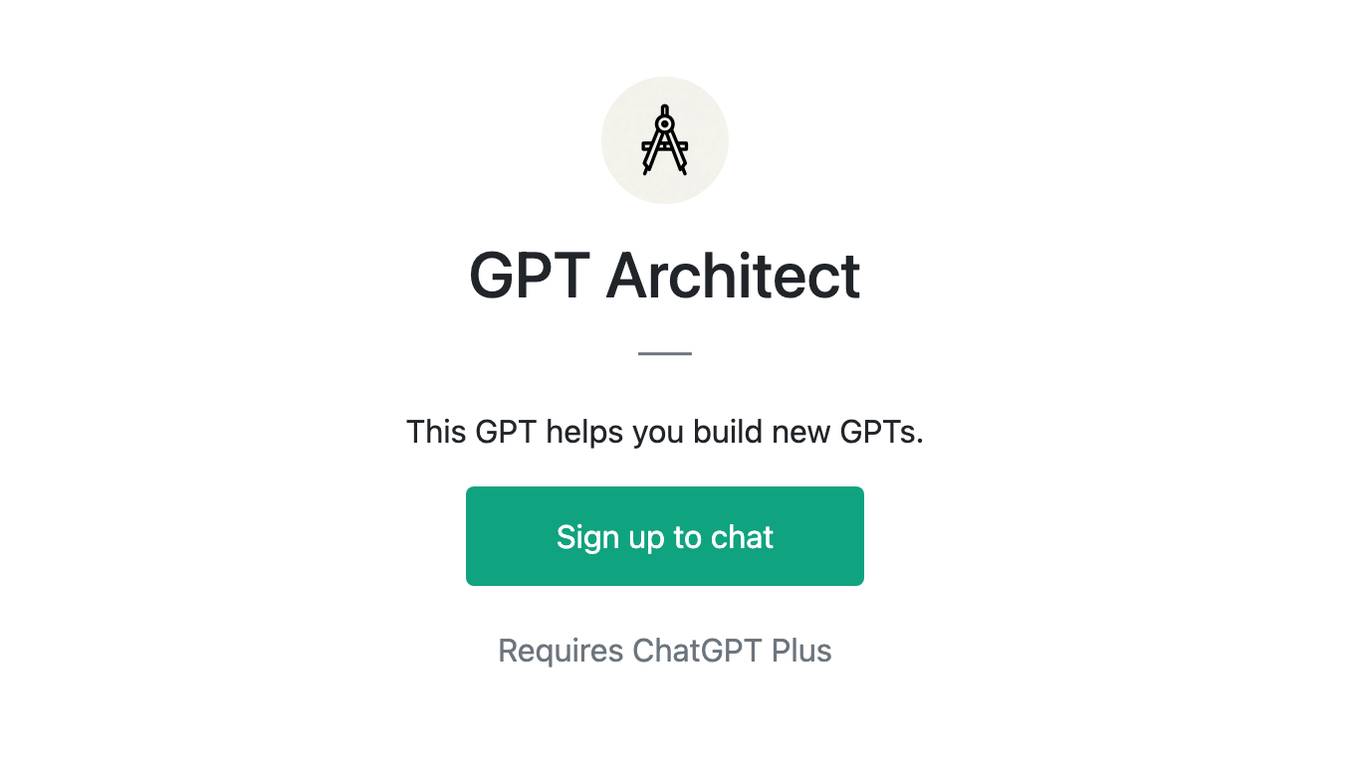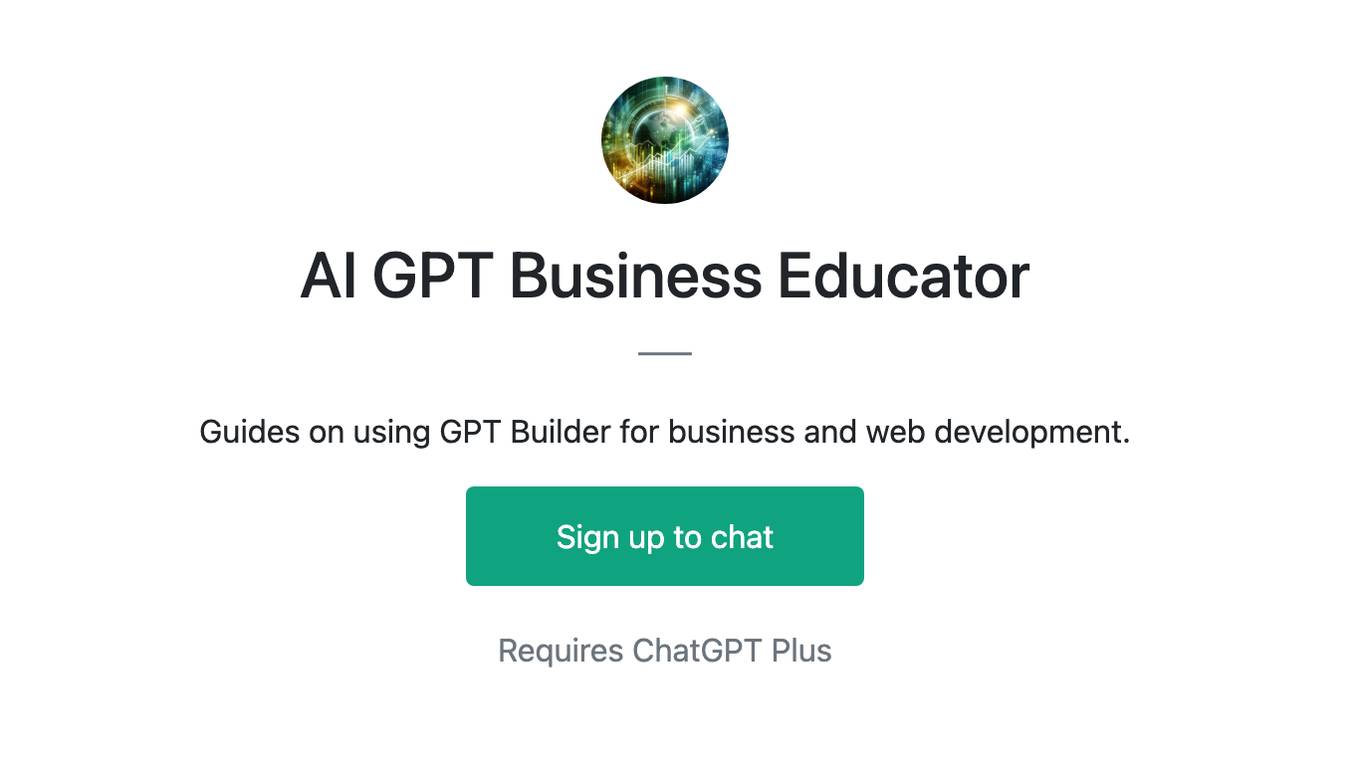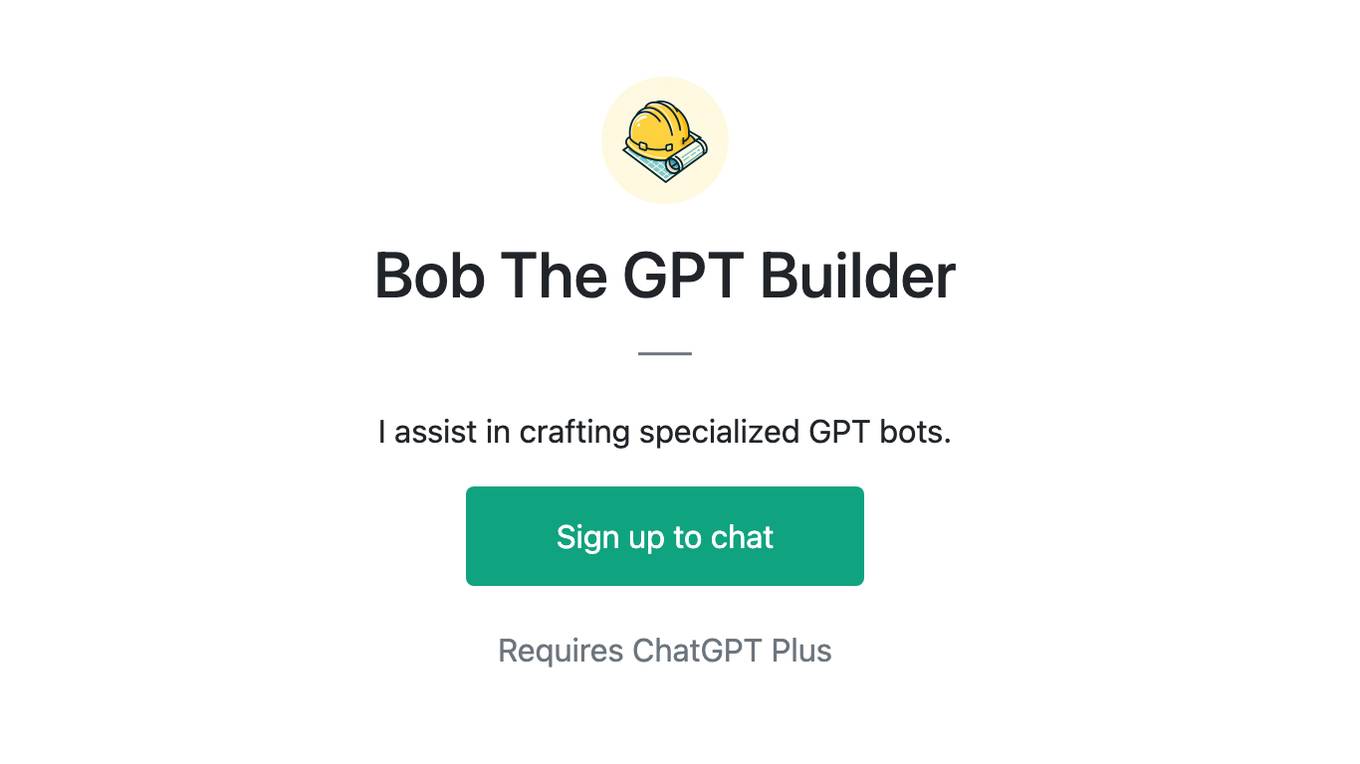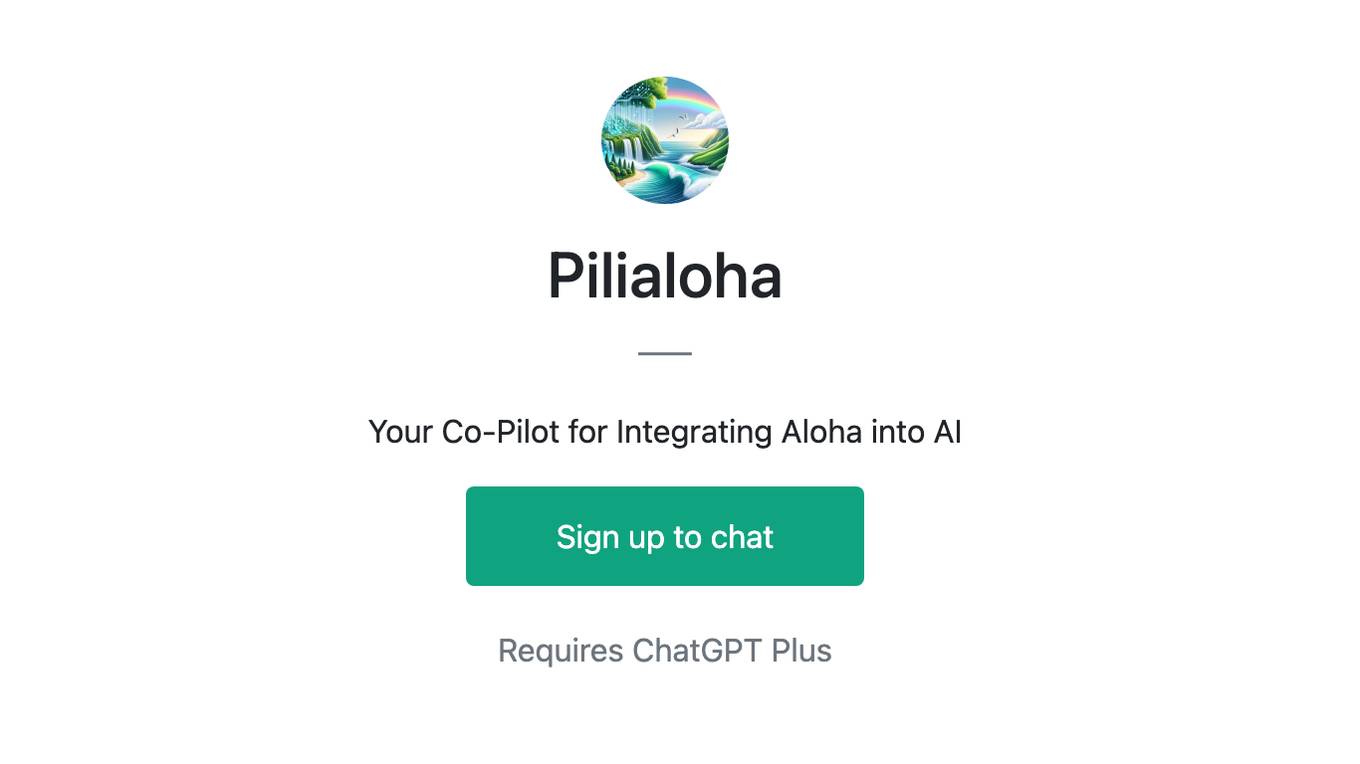Best AI tools for< Build Generative Ai Applications >
20 - AI tool Sites
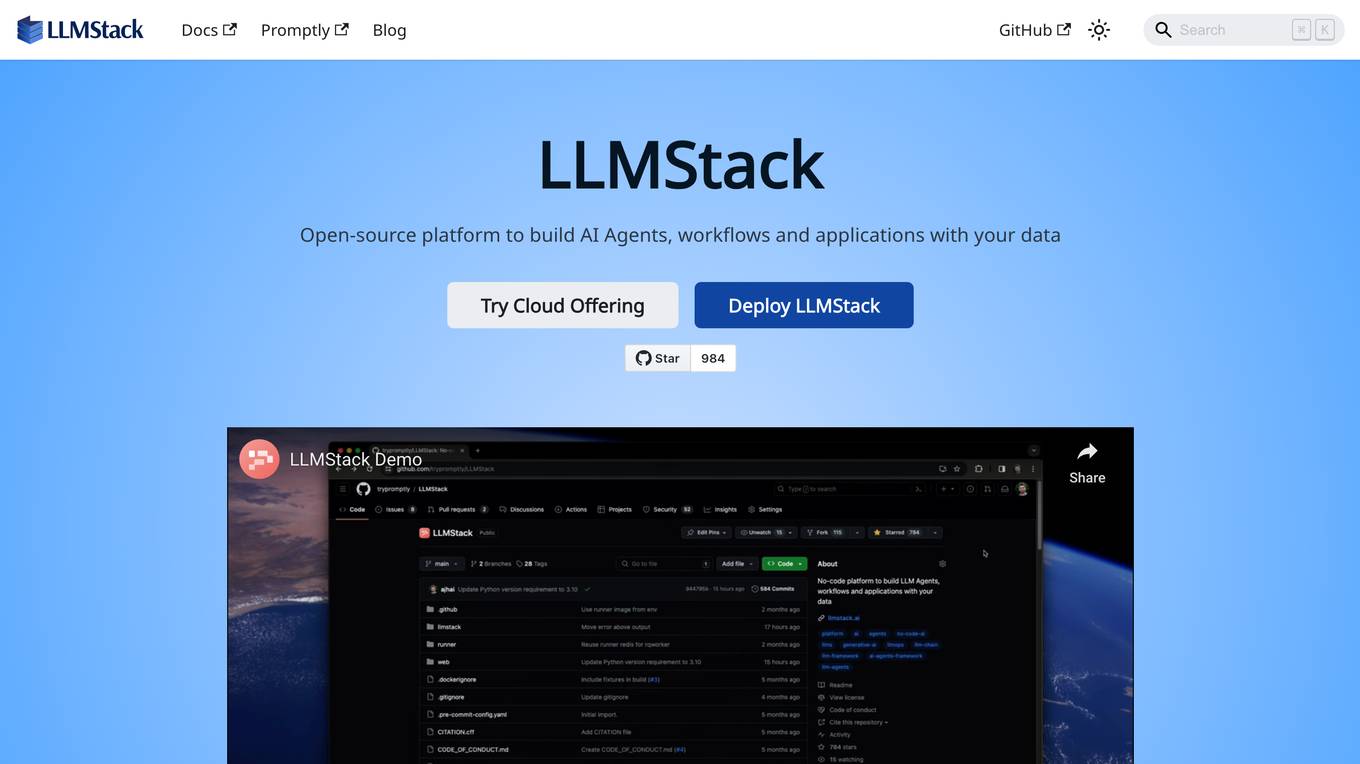
LLMStack
LLMStack is an open-source platform that allows users to build AI Agents, workflows, and applications using their own data. It is a no-code AI app builder that supports model chaining from major providers like OpenAI, Cohere, Stability AI, and Hugging Face. Users can import various data sources such as Web URLs, PDFs, audio files, and more to enhance generative AI applications and chatbots. With a focus on collaboration, LLMStack enables users to share apps publicly or restrict access, with viewer and collaborator roles for multiple users to work together. Powered by React, LLMStack provides an easy-to-use interface for building AI applications.
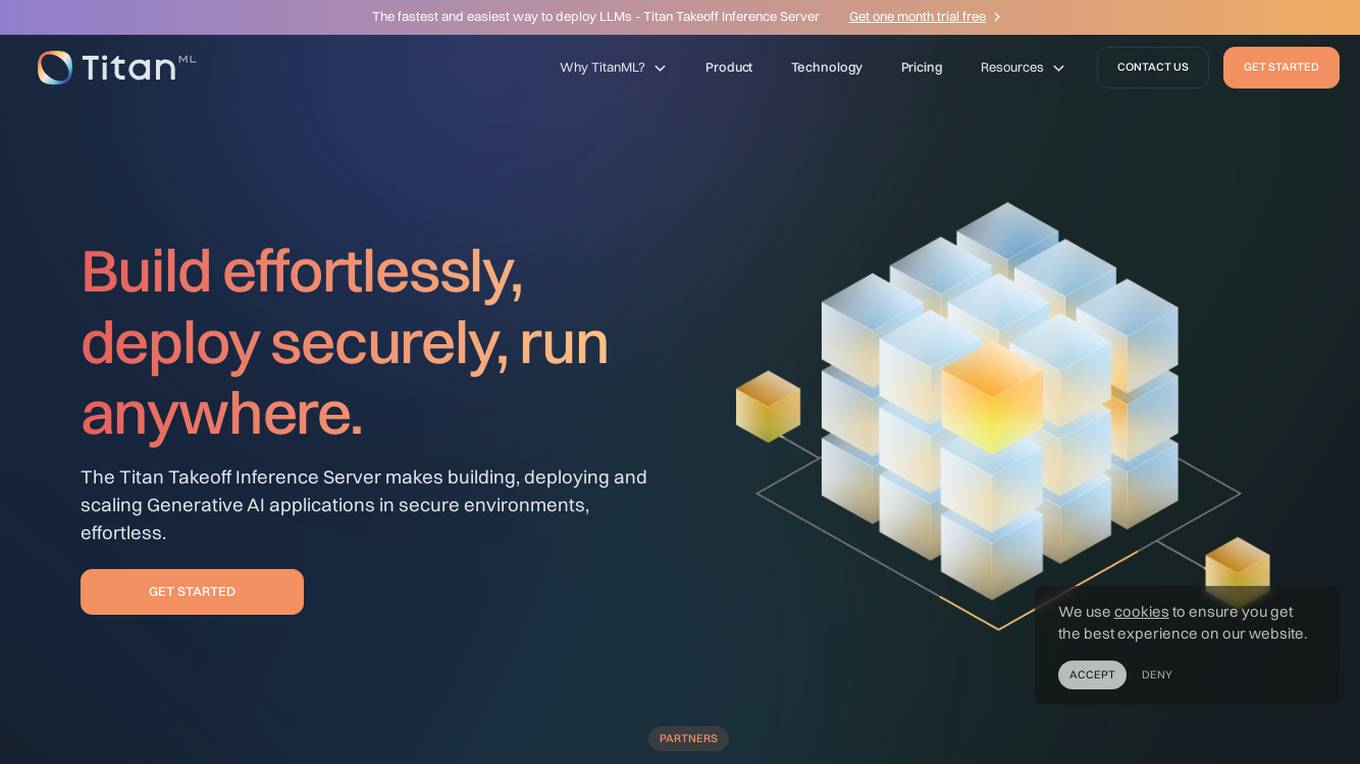
TitanML
TitanML is a platform that provides tools and services for deploying and scaling Generative AI applications. Their flagship product, the Titan Takeoff Inference Server, helps machine learning engineers build, deploy, and run Generative AI models in secure environments. TitanML's platform is designed to make it easy for businesses to adopt and use Generative AI, without having to worry about the underlying infrastructure. With TitanML, businesses can focus on building great products and solving real business problems.
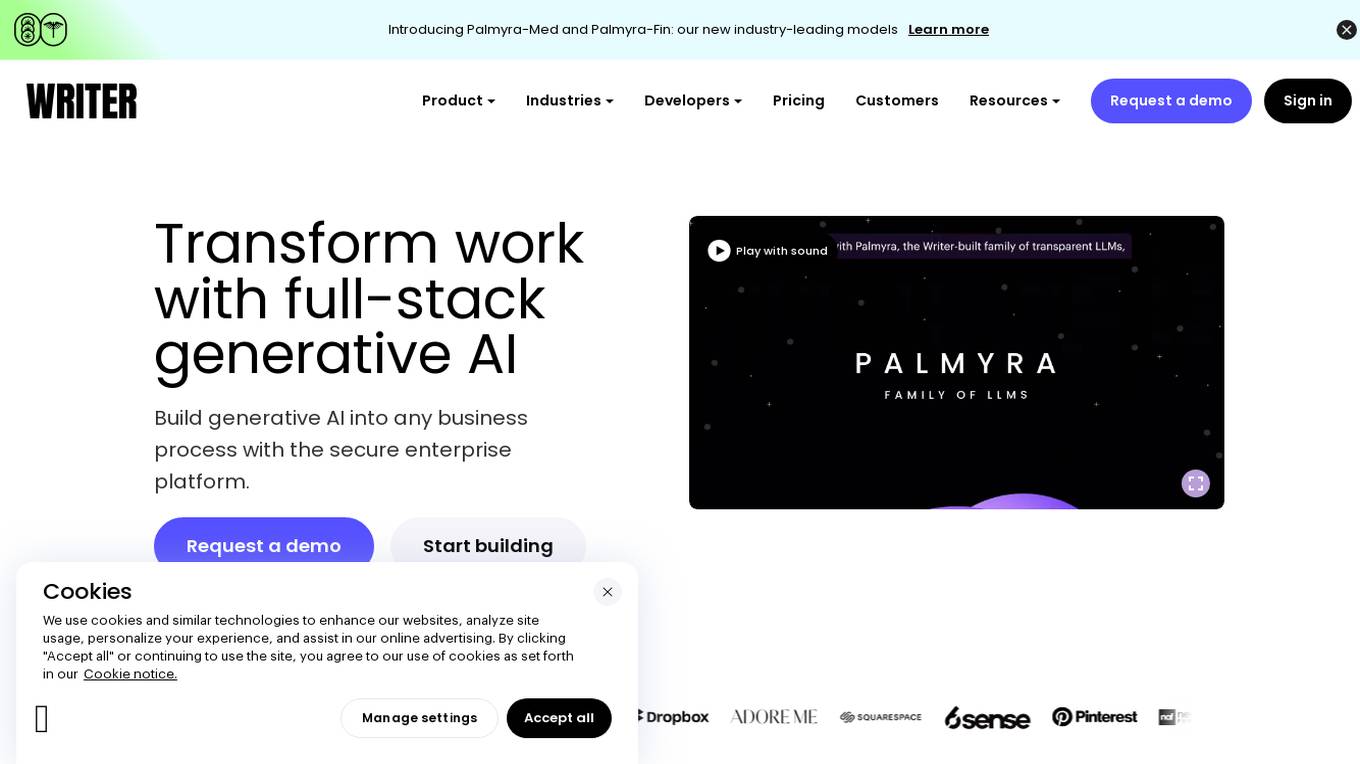
Writer
Writer is a full-stack generative AI platform that offers industry-leading models Palmyra-Med and Palmyra-Fin. It provides a secure enterprise platform to embed generative AI into any business process, enforce legal and brand compliance, and gain insights through analysis. Writer's platform abstracts complexity, allowing users to focus on AI-first workflows without the need to maintain infrastructure. The platform includes Palmyra LLMs, Knowledge Graph, and AI guardrails to ensure quality, control, transparency, accuracy, and security in AI applications.
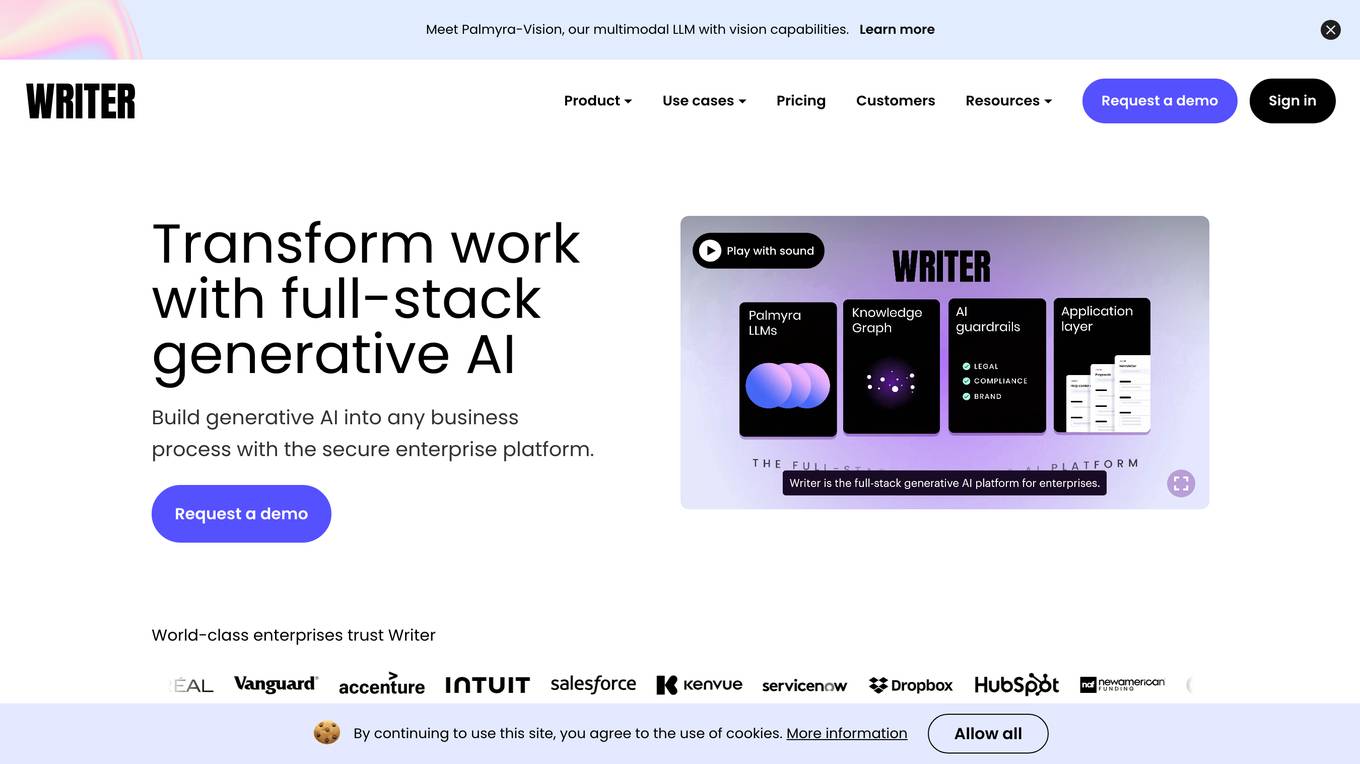
Writer
Writer is a full-stack generative AI platform that enables businesses to build and deploy custom AI applications for a wide range of use cases, including digital assistants, content generation, summarization, and data analysis. Writer's platform is designed to be accurate, scalable, and cost-effective, and it offers a variety of features to help businesses get the most out of generative AI, including: - Palmyra LLMs: Writer's family of LLMs is purpose-built for the enterprise and offers a range of capabilities, including question-answering, image analysis, and multilingual translation. - Knowledge Graph: Writer's Knowledge Graph anchors generative AI in your company data, resulting in higher accuracy and fewer hallucinations. - AI guardrails: Writer's AI guardrails help businesses enforce their regulatory, legal, inclusivity, and brand rules across all work, whether it's created by their people or AI. - Flexible application layer: Writer's flexible application layer offers a wide range of interfaces to meet your specific needs, whether you're using a prebuilt app, building a custom app, or making requests to our out-of-the-box chat app.
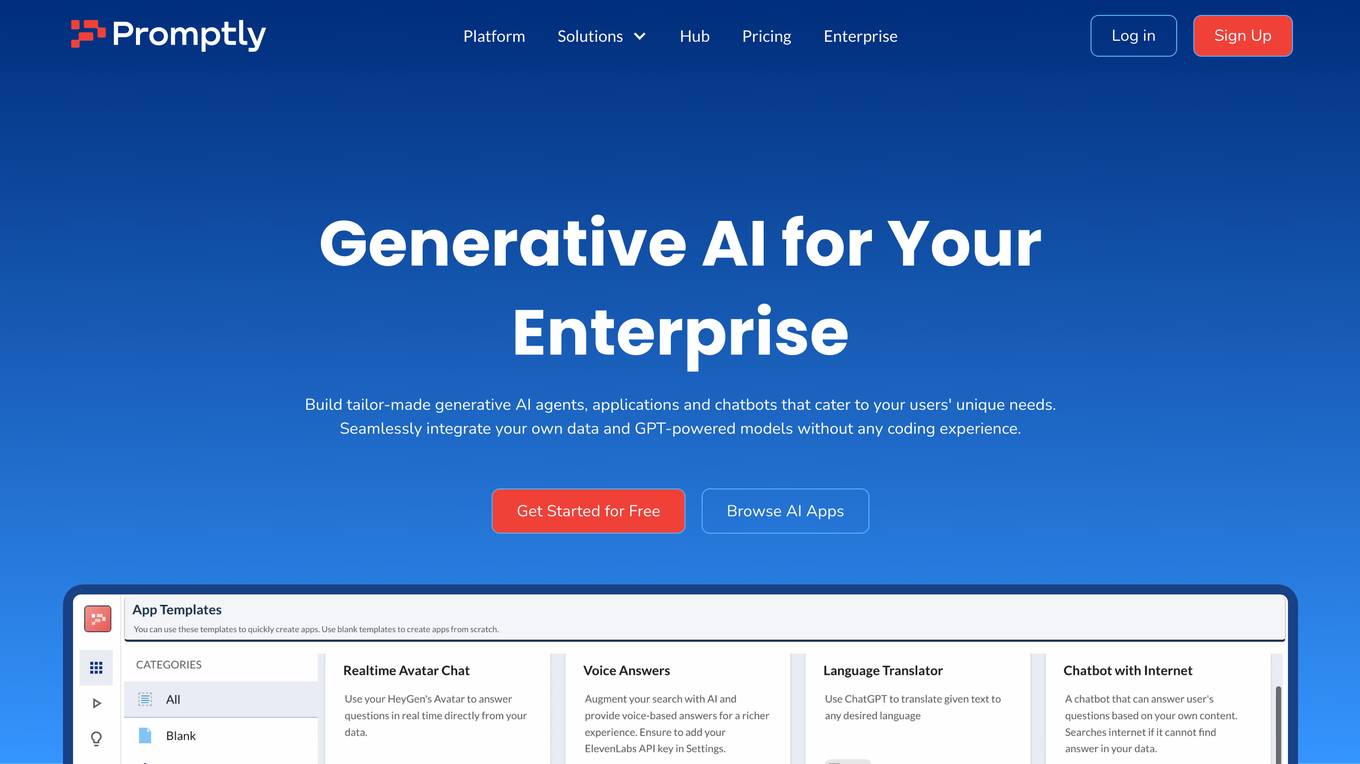
Promptly
Promptly is a generative AI platform designed for enterprises to build custom AI agents, applications, and chatbots without any coding experience. The platform allows users to seamlessly integrate their own data and GPT-powered models, supporting a wide variety of data sources. With features like model chaining, developer-friendly tools, and collaborative app building, Promptly empowers teams to quickly prototype and scale AI applications for various use cases. The platform also offers seamless integrations with popular workflows and tools, ensuring limitless possibilities for AI-powered solutions.
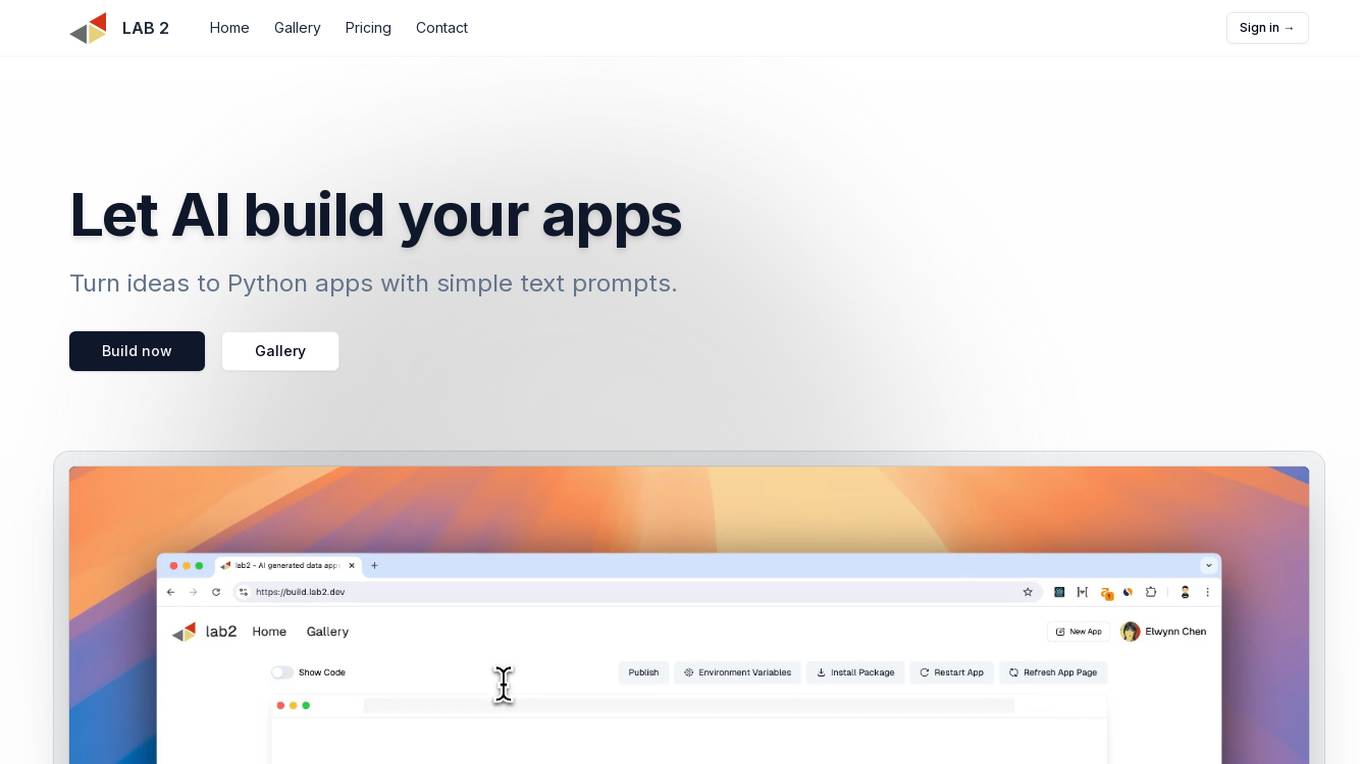
lab2
lab2.dev is an AI tool that allows users to generate Python applications using simple text prompts. It helps users, regardless of their coding experience, to quickly turn their ideas into functional Python apps. With lab2 AI, users can easily build generative AI apps and streamline their workflow in app development. The tool provides AI assistance to generate Streamlit apps in minutes, and offers a community gallery to explore various apps created by users. lab2 AI aims to simplify the app development process and empower users to create AI-powered applications effortlessly.

Dify.AI
Dify.AI is a generative AI application development platform that allows users to create AI agents, chatbots, and other AI-powered applications. It provides a variety of tools and services to help developers build, deploy, and manage their AI applications. Dify.AI is designed to be easy to use, even for those with no prior experience in AI development.
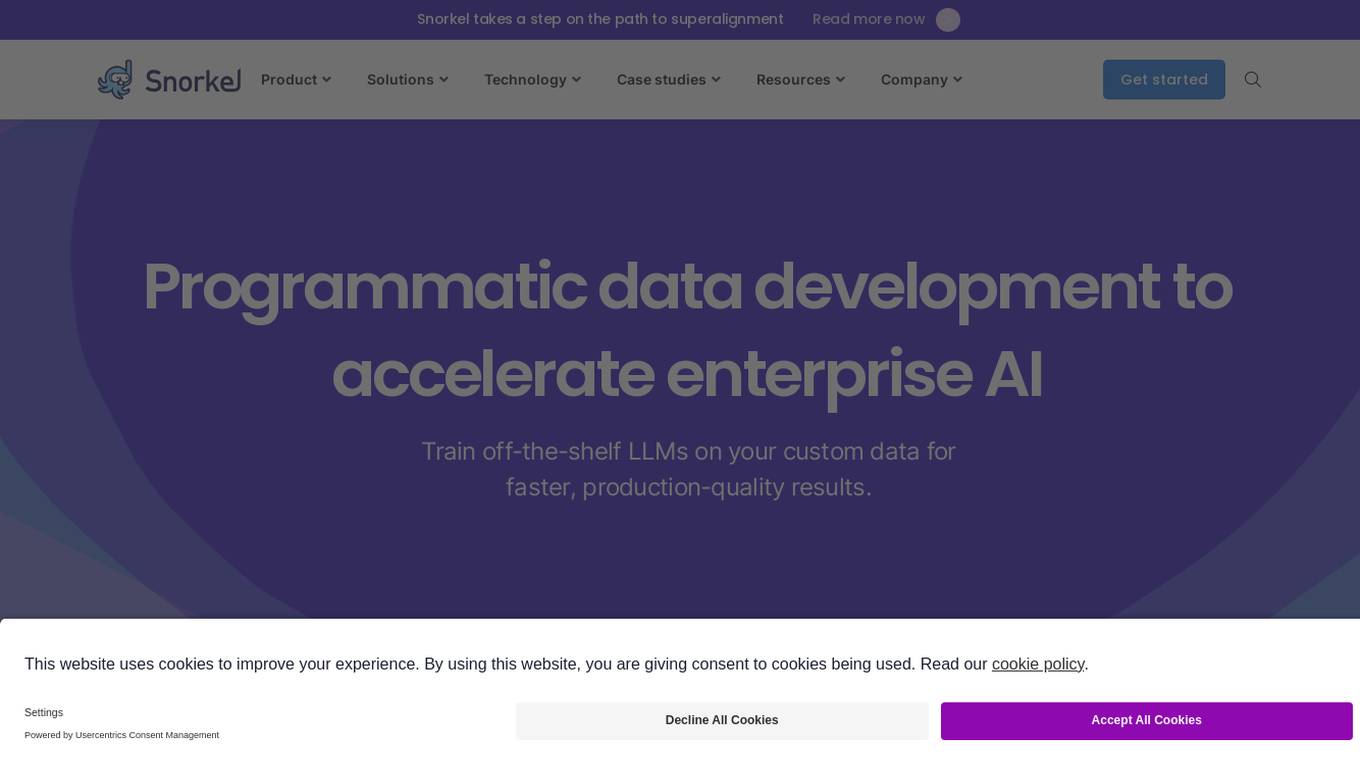
Snorkel AI
Snorkel AI is a data-centric AI application designed for enterprise use. It offers tools and platforms to programmatically label and curate data, accelerate AI development, and build high-quality generative AI applications. The application aims to help users develop AI models 100x faster by leveraging programmatic data operations and domain knowledge. Snorkel AI is known for its expertise in computer vision, data labeling, generative AI, and enterprise AI solutions. It provides resources, case studies, and research papers to support users in their AI development journey.
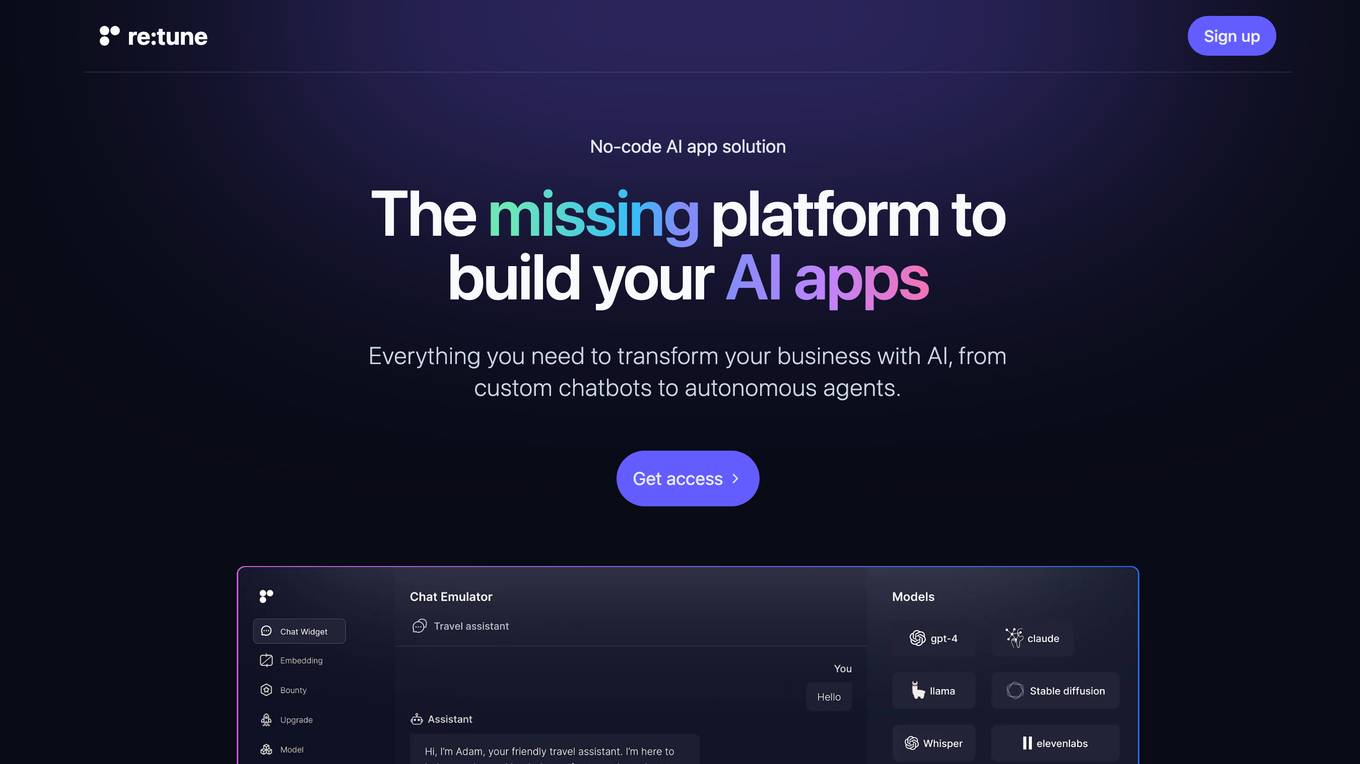
re:tune
re:tune is a no-code AI app solution that provides everything you need to transform your business with AI, from custom chatbots to autonomous agents. With re:tune, you can build chatbots for any use case, connect any data source, and integrate with all your favorite tools and platforms. re:tune is the missing platform to build your AI apps.
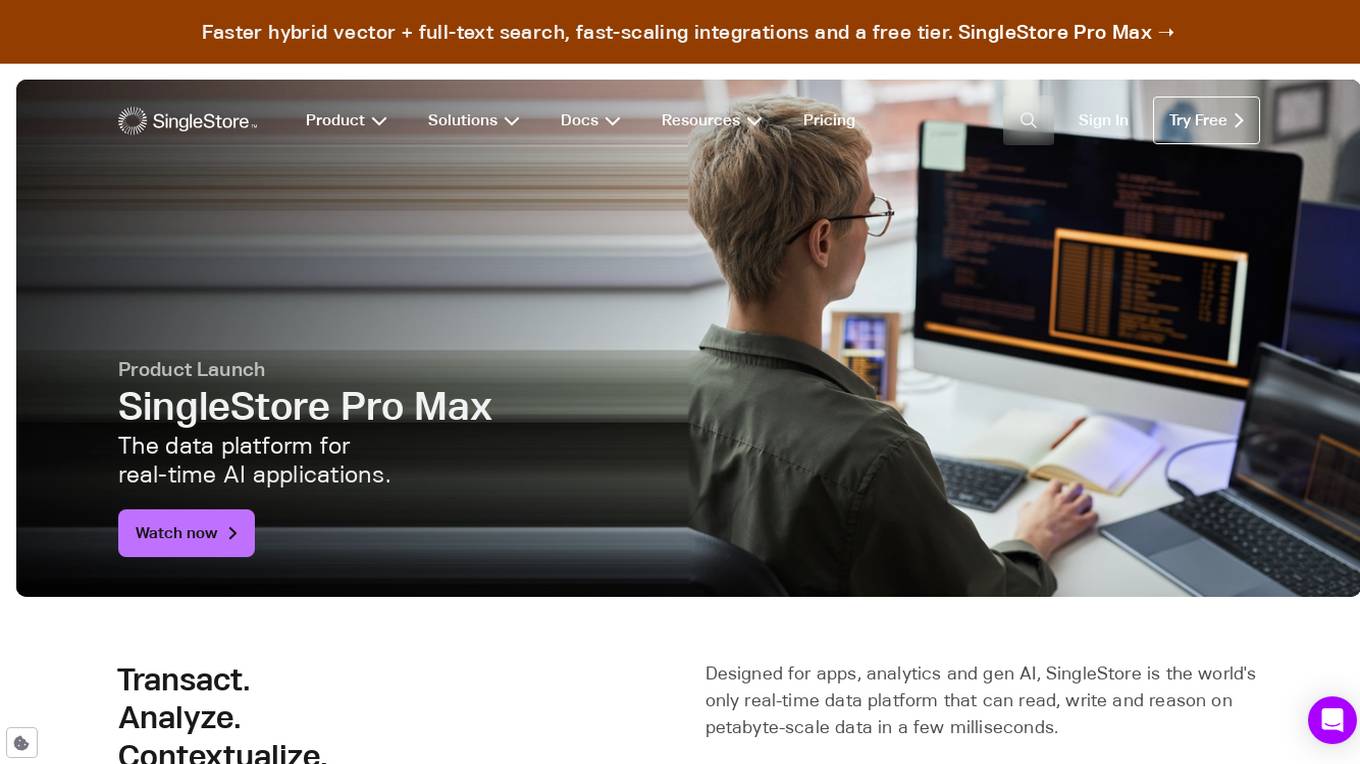
SingleStore
SingleStore is a real-time data platform designed for apps, analytics, and gen AI. It offers faster hybrid vector + full-text search, fast-scaling integrations, and a free tier. SingleStore can read, write, and reason on petabyte-scale data in milliseconds. It supports streaming ingestion, high concurrency, first-class vector support, record lookups, and more.
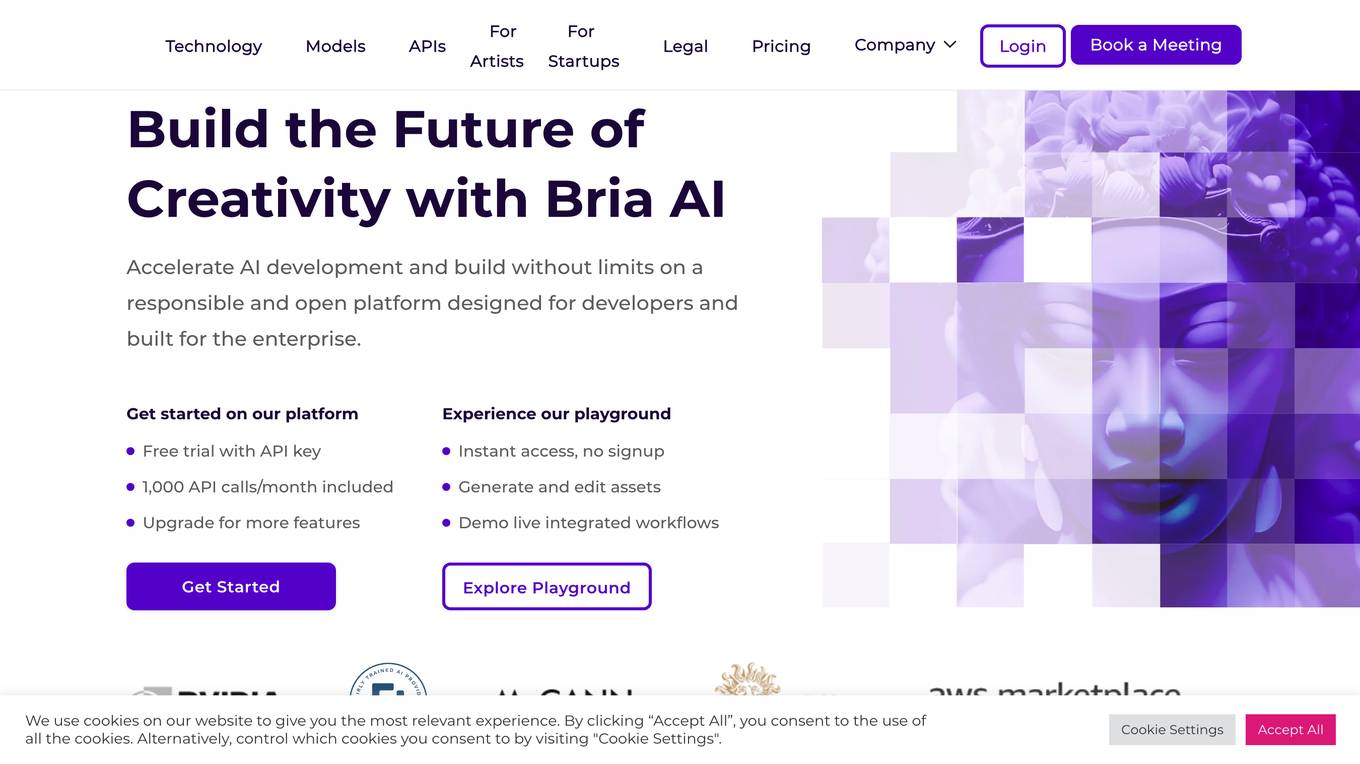
BRIA.ai
BRIA.ai is a visual generative AI platform that provides developers and businesses with the tools they need to build and deploy AI-powered applications. The platform includes a suite of pre-trained foundation models, APIs, and tools that can be used to generate and modify images, videos, and other visual content. BRIA.ai is committed to responsible AI practices and ensures that all of its models are trained on licensed and safe-to-use data.
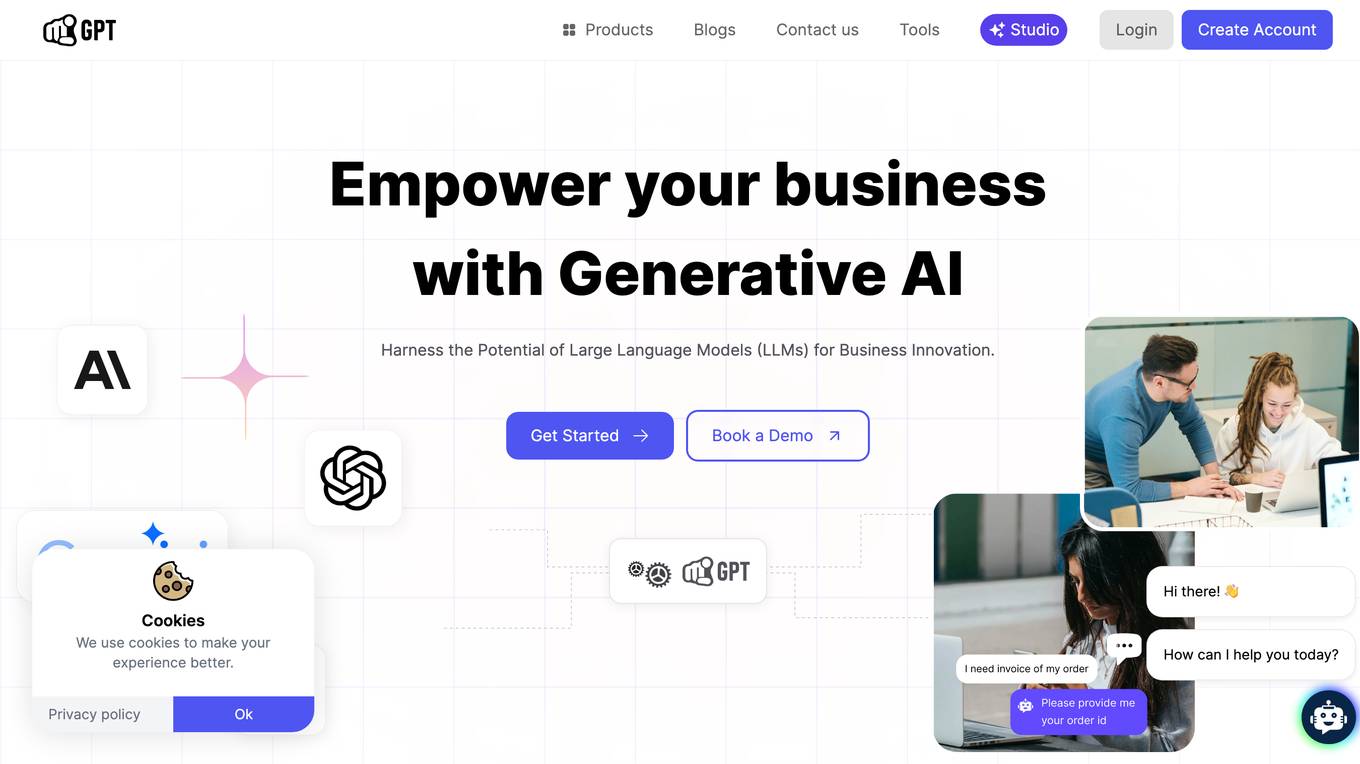
YourGPT
YourGPT is a suite of next-generation AI products designed to empower businesses with the potential of Large Language Models (LLMs). Its products include a no-code AI Chatbot solution for customer support and LLM Spark, a developer platform for building and deploying production-ready LLM applications. YourGPT prioritizes data security and is GDPR compliant, ensuring the privacy and protection of customer data. With over 2,000 satisfied customers, YourGPT has earned trust through its commitment to quality and customer satisfaction.
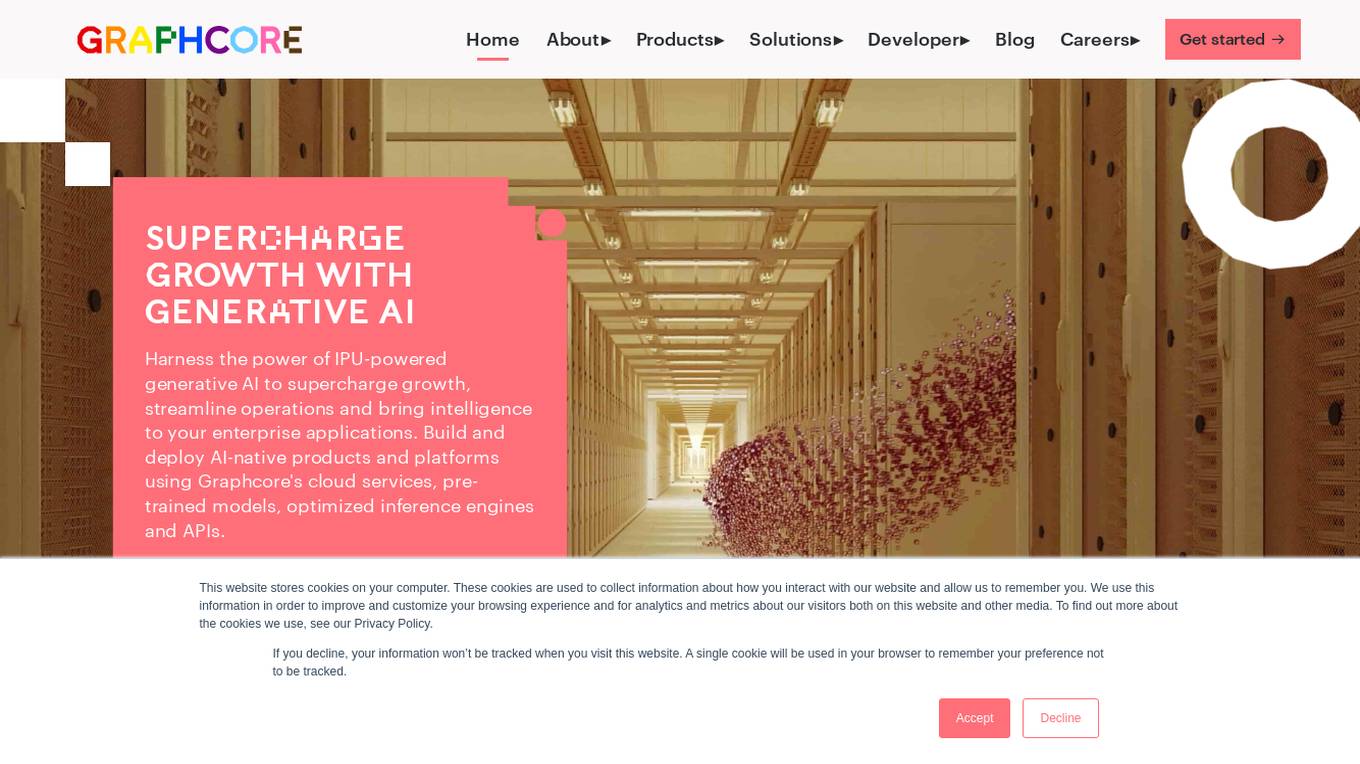
Graphcore
Graphcore is a cloud-based platform that accelerates machine learning processes by harnessing the power of IPU-powered generative AI. It offers cloud services, pre-trained models, optimized inference engines, and APIs to streamline operations and bring intelligence to enterprise applications. With Graphcore, users can build and deploy AI-native products and platforms using the latest AI technologies such as LLMs, NLP, and Computer Vision.

LM-Kit.NET
LM-Kit.NET is a comprehensive AI toolkit for .NET developers, offering a wide range of features such as AI agent integration, data processing, text analysis, translation, text generation, and model optimization. The toolkit enables developers to create intelligent and adaptable AI applications by providing tools for language models, sentiment analysis, emotion detection, and more. With a focus on performance optimization and security, LM-Kit.NET empowers developers to build cutting-edge AI solutions seamlessly into their C# and VB.NET applications.
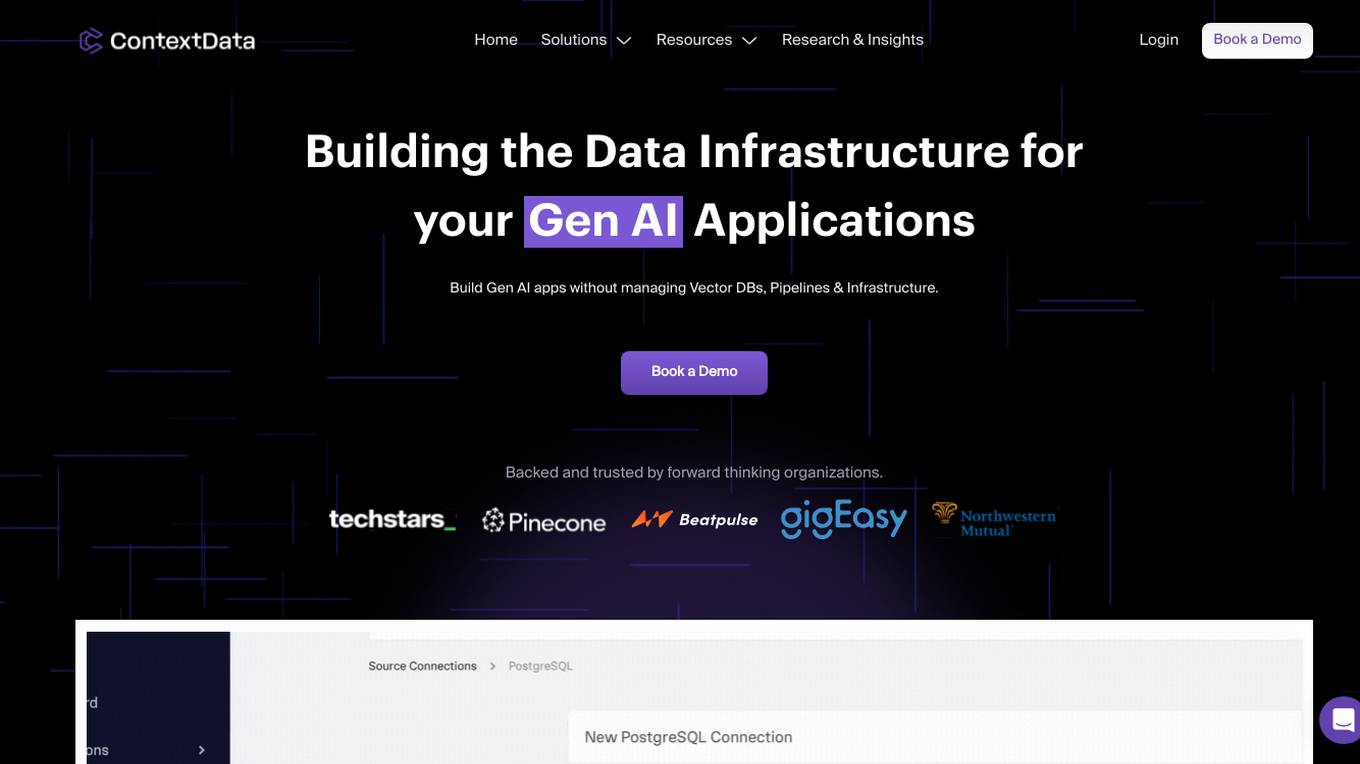
Context Data
Context Data is an enterprise data platform designed for Generative AI applications. It enables organizations to build AI apps without the need to manage vector databases, pipelines, and infrastructure. The platform empowers AI teams to create mission-critical applications by simplifying the process of building and managing complex workflows. Context Data also provides real-time data processing capabilities and seamless vector data processing. It offers features such as data catalog ontology, semantic transformations, and the ability to connect to major vector databases. The platform is ideal for industries like financial services, healthcare, real estate, and shipping & supply chain.
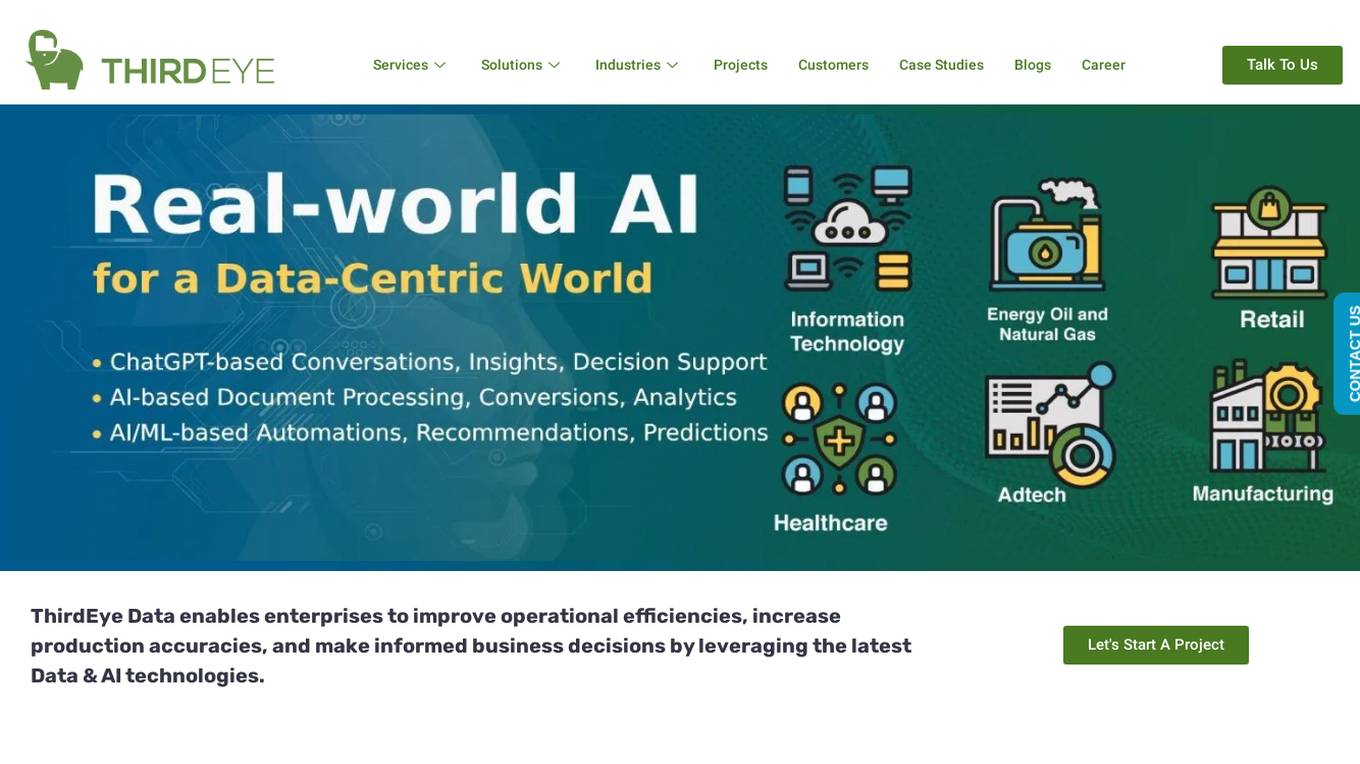
ThirdEye Data
ThirdEye Data is a data and AI services & solutions provider that enables enterprises to improve operational efficiencies, increase production accuracies, and make informed business decisions by leveraging the latest Data & AI technologies. They offer services in data engineering, data science, generative AI, computer vision, NLP, and more. ThirdEye Data develops bespoke AI applications using the latest data science technologies to address real-world industry challenges and assists enterprises in leveraging generative AI models to develop custom applications. They also provide AI consulting services to explore potential opportunities for AI implementation. The company has a strong focus on customer success and has received positive reviews and awards for their expertise in AI, ML, and big data solutions.
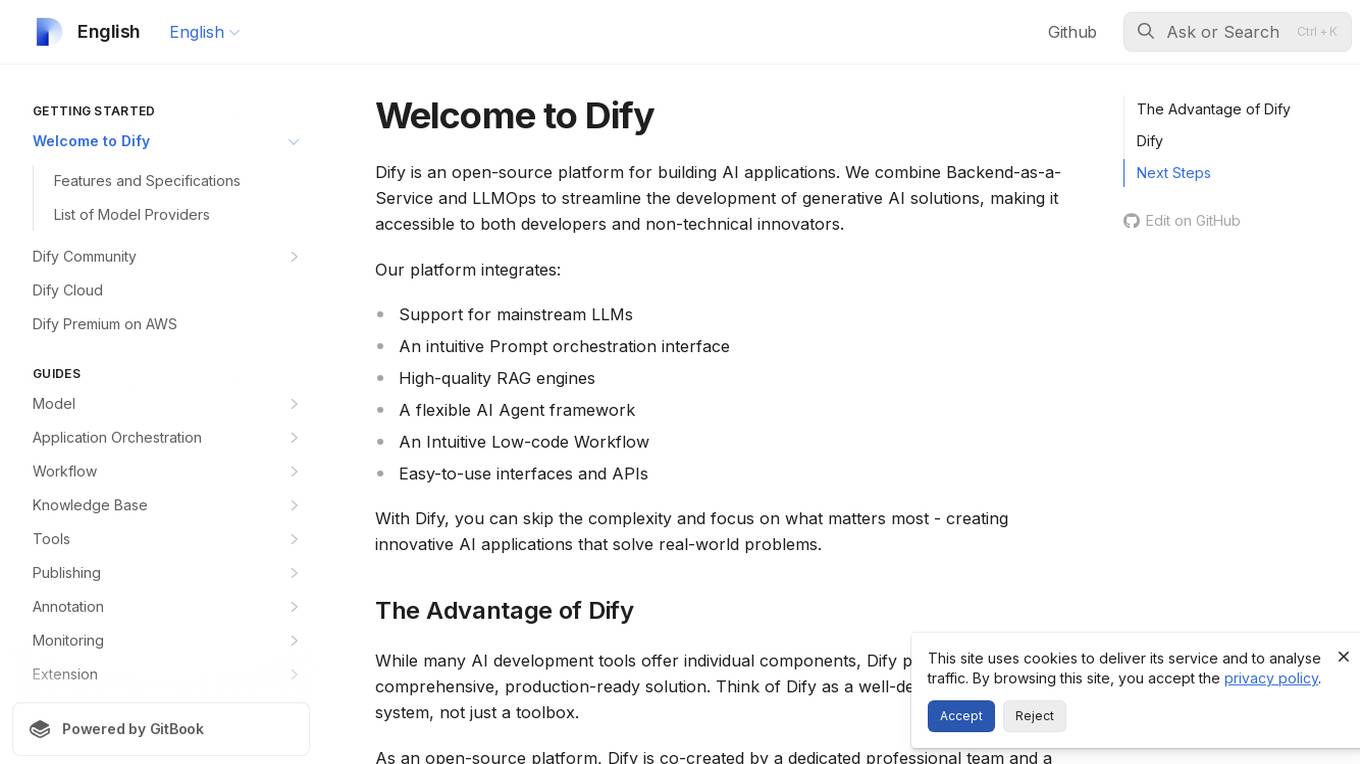
Dify
Dify is an open-source platform for building AI applications that combines Backend-as-a-Service and LLMOps to streamline the development of generative AI solutions. It integrates support for mainstream LLMs, an intuitive Prompt orchestration interface, high-quality RAG engines, a flexible AI Agent framework, and easy-to-use interfaces and APIs. Dify allows users to skip complexity and focus on creating innovative AI applications that solve real-world problems. It offers a comprehensive, production-ready solution with a user-friendly interface.
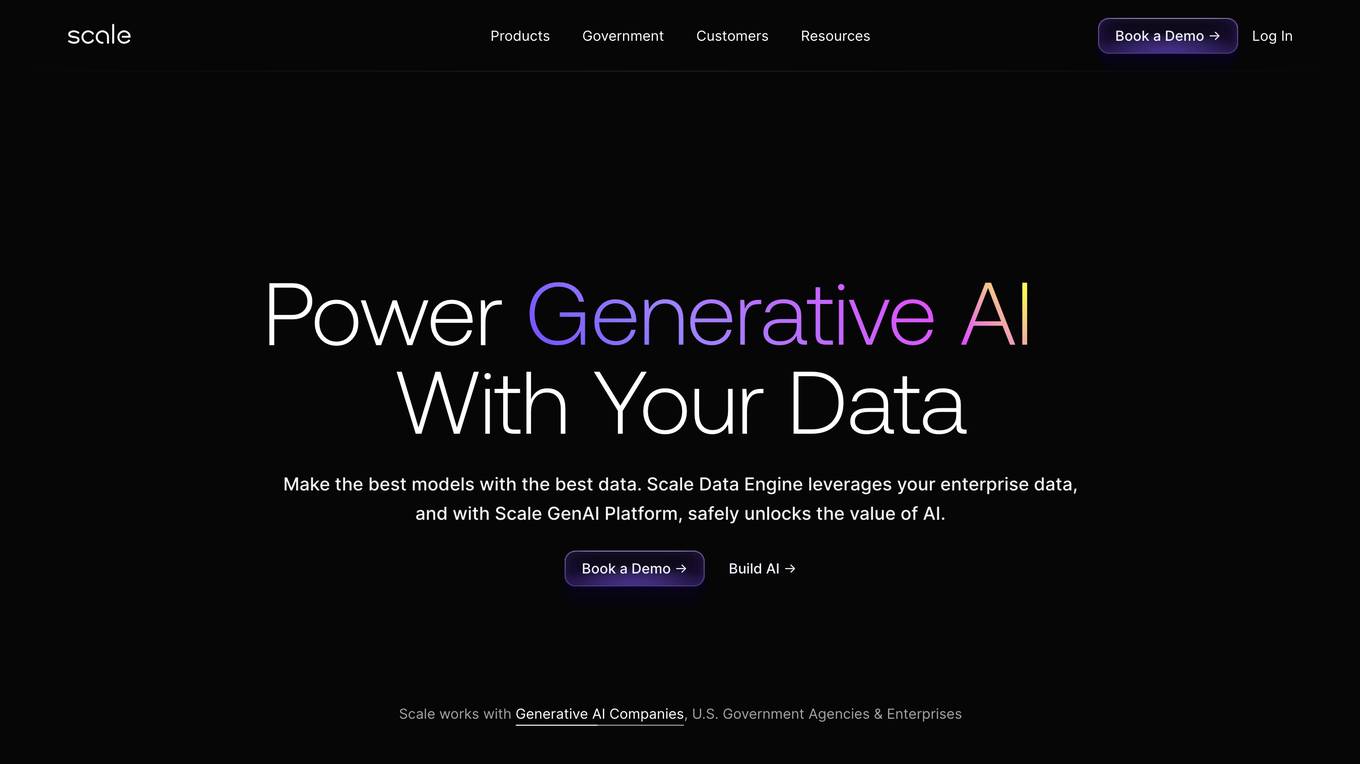
Scale AI
Scale AI is an AI tool that accelerates the development of AI applications for enterprise, government, and automotive sectors. It offers Scale Data Engine for generative AI, Scale GenAI Platform, and evaluation services for model developers. The platform leverages enterprise data to build sustainable AI programs and partners with leading AI models. Scale's focus on generative AI applications, data labeling, and model evaluation sets it apart in the AI industry.
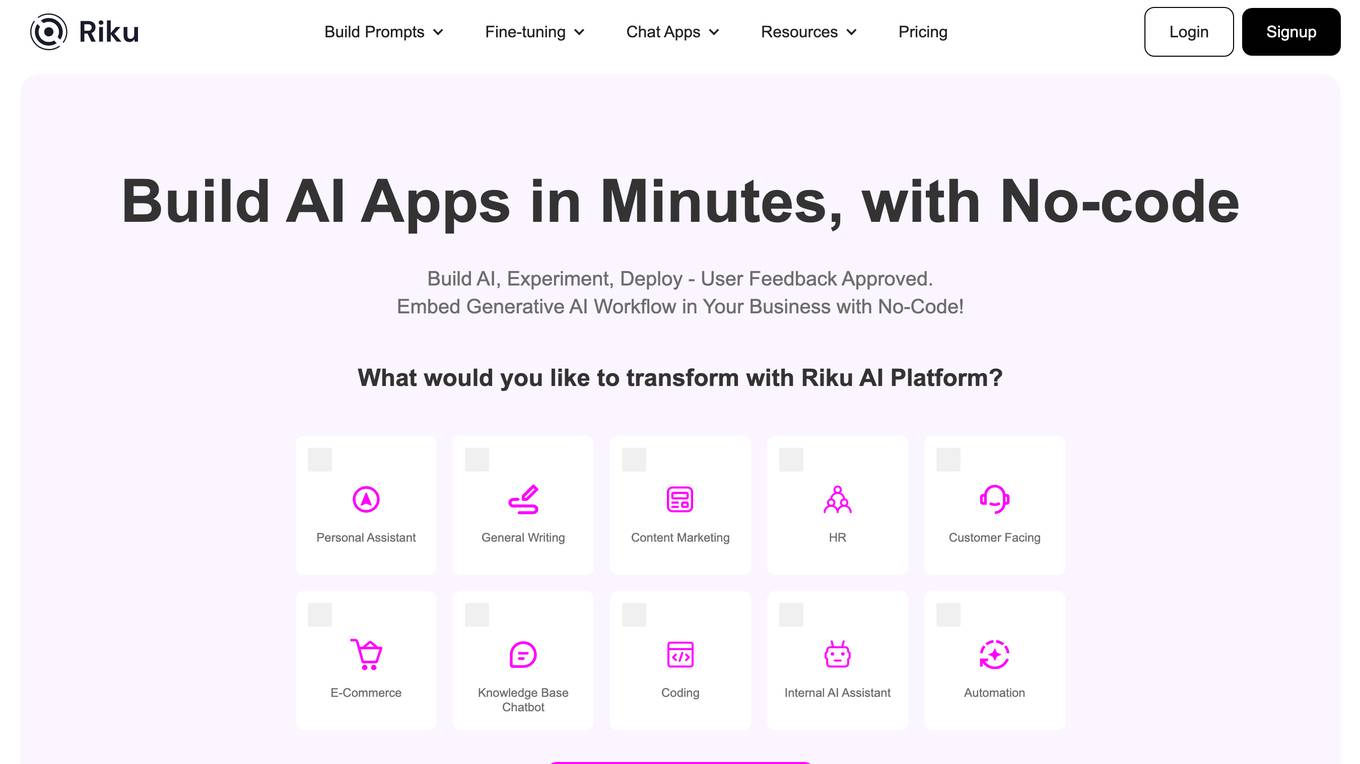
Riku
Riku is a no-code platform that allows users to build and deploy powerful generative AI for their business. With access to over 40 industry-leading LLMs, users can easily test different prompts to find just the right one for their needs. Riku's platform also allows users to connect siloed data sources and systems together to feed into powerful AI applications. This makes it easy for businesses to automate repetitive tasks, test ideas rapidly, and get answers in real-time.
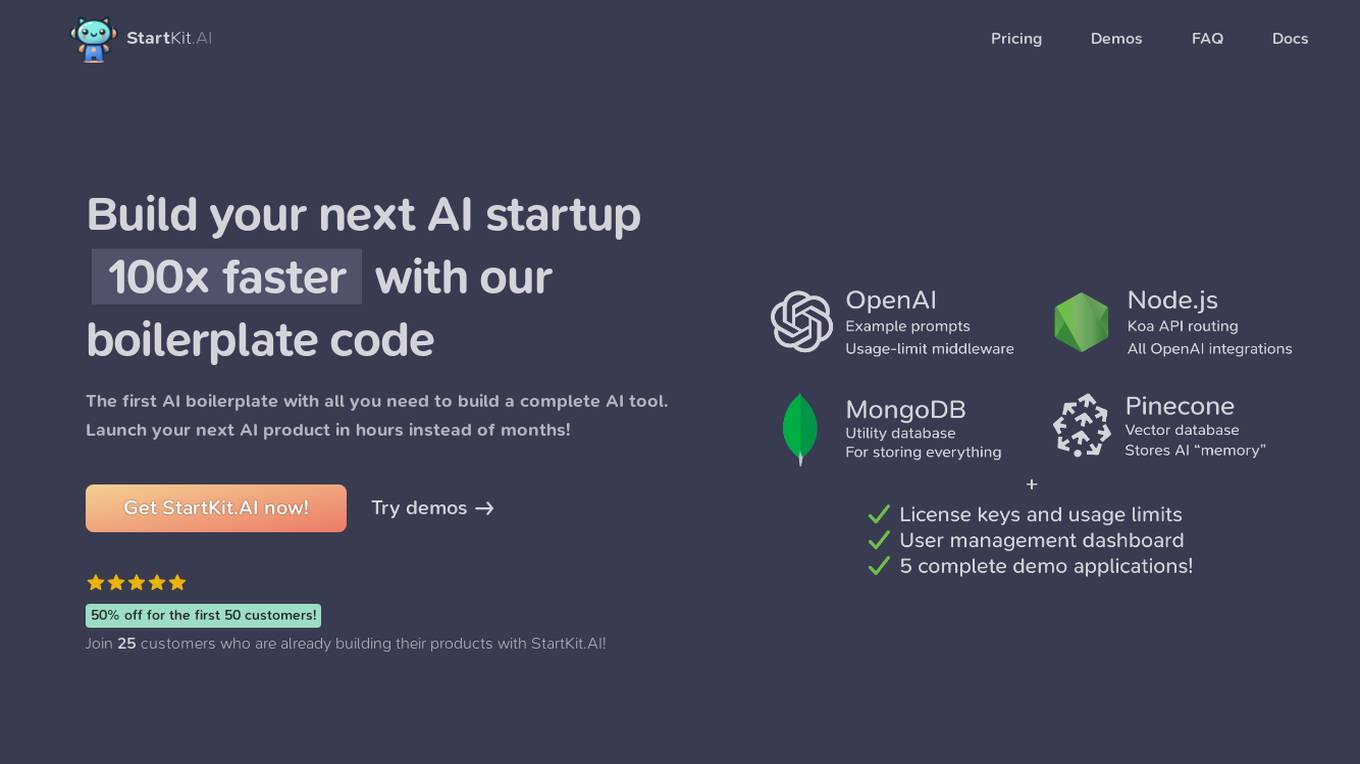
StartKit.AI
StartKit.AI is a boilerplate code for AI products that helps users build their AI startups 100x faster. It includes pre-built REST API routes for all common AI functionality, a pre-configured Pinecone for text embeddings and Retrieval-Augmented Generation (RAG) for chat endpoints, and five React demo apps to help users get started quickly. StartKit.AI also provides a license key and magic link authentication, user & API limit management, and full documentation for all its code. Additionally, users get access to guides to help them get set up and one year of updates.
2 - Open Source AI Tools
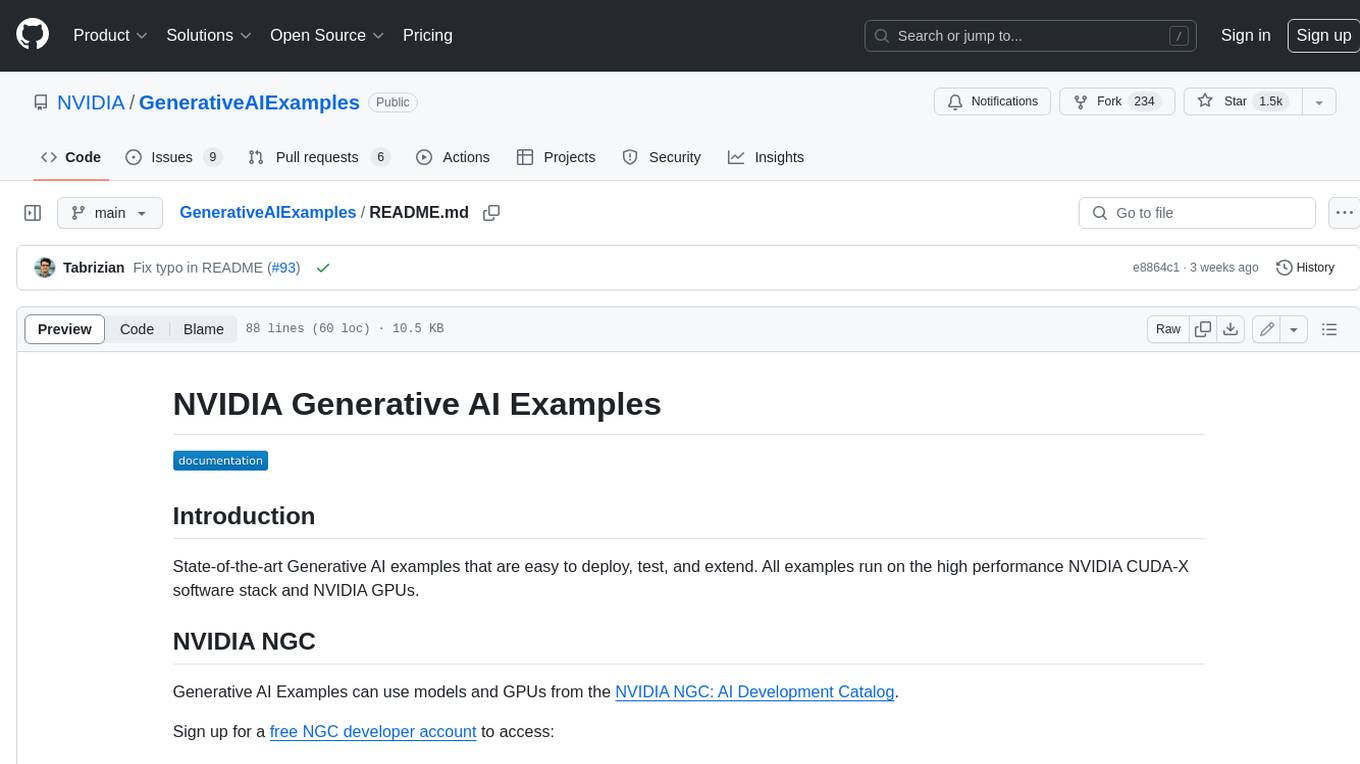
GenerativeAIExamples
NVIDIA Generative AI Examples are state-of-the-art examples that are easy to deploy, test, and extend. All examples run on the high performance NVIDIA CUDA-X software stack and NVIDIA GPUs. These examples showcase the capabilities of NVIDIA's Generative AI platform, which includes tools, frameworks, and models for building and deploying generative AI applications.
aiconfig
AIConfig is a framework that makes it easy to build generative AI applications for production. It manages generative AI prompts, models and model parameters as JSON-serializable configs that can be version controlled, evaluated, monitored and opened in a local editor for rapid prototyping. It allows you to store and iterate on generative AI behavior separately from your application code, offering a streamlined AI development workflow.
20 - OpenAI Gpts
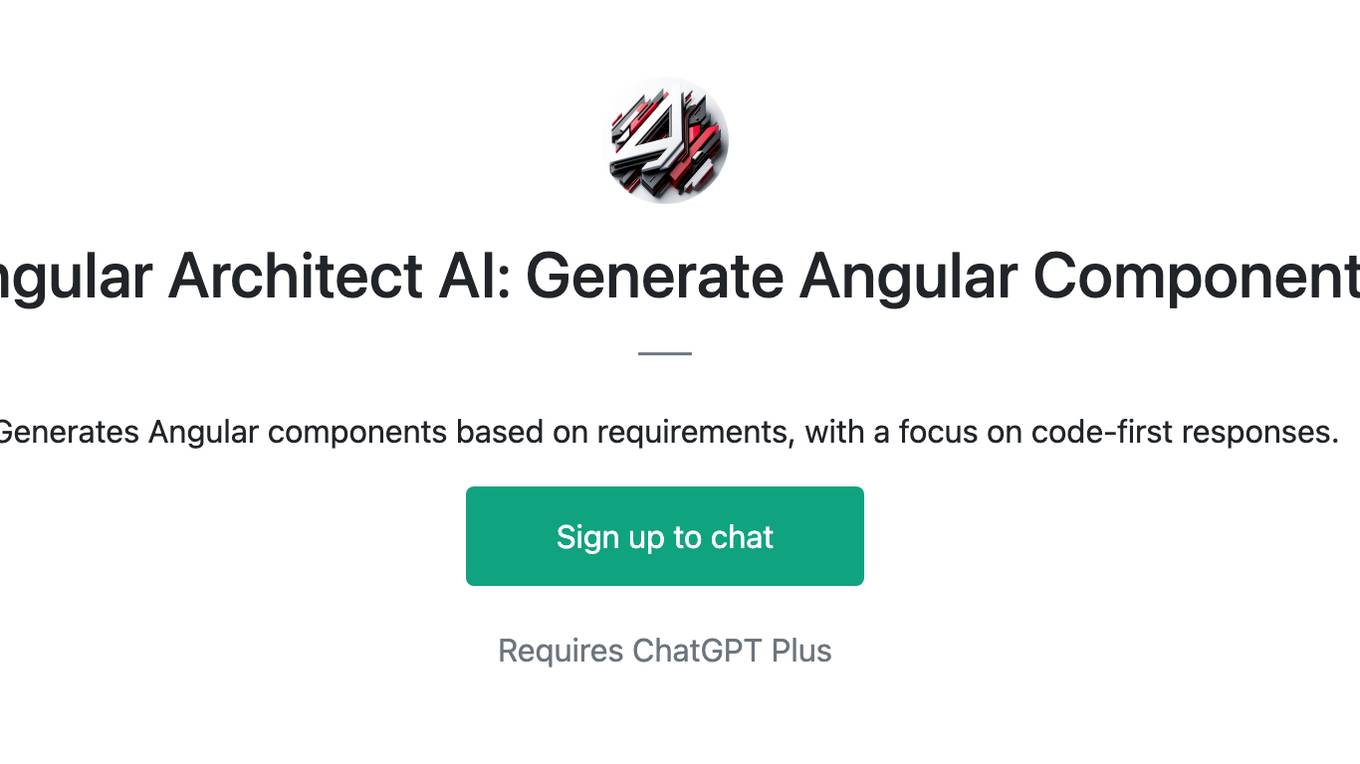
Angular Architect AI: Generate Angular Components
Generates Angular components based on requirements, with a focus on code-first responses.
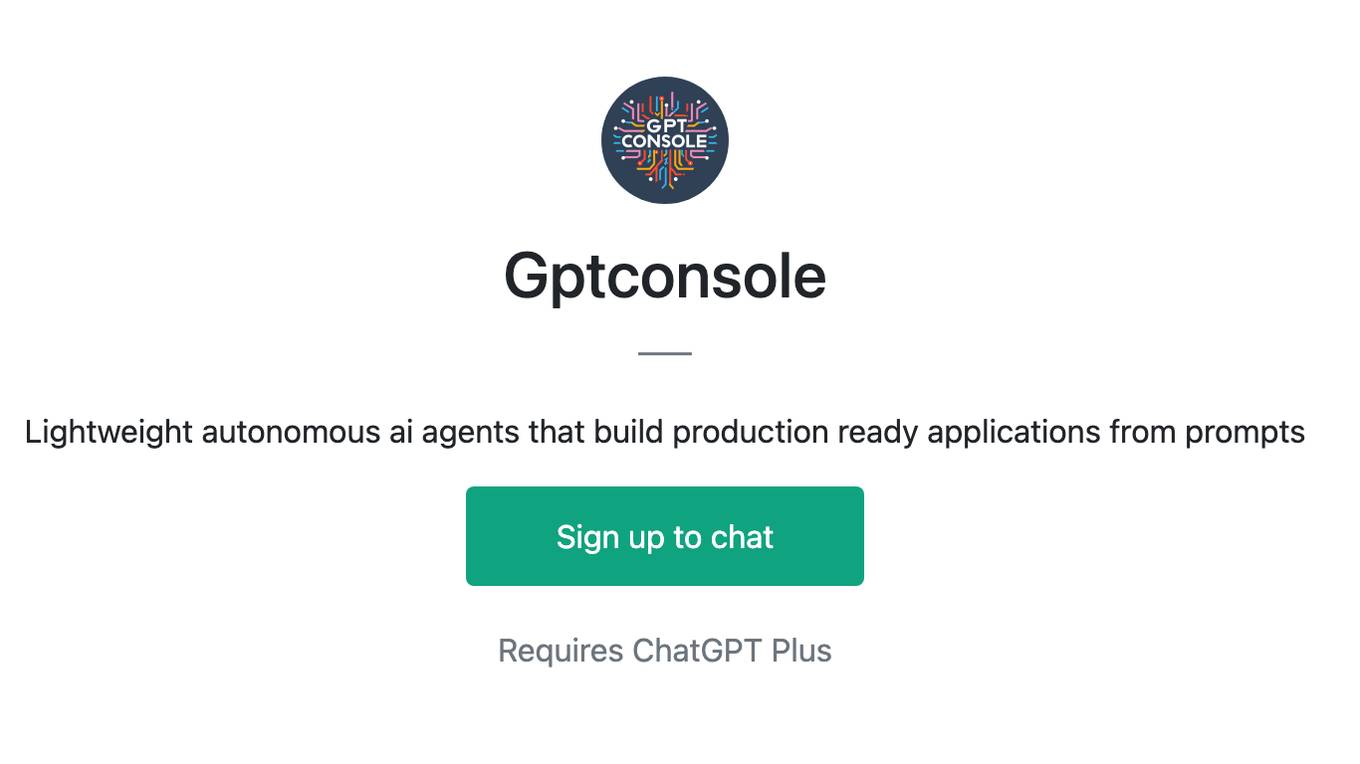
Gptconsole
Lightweight autonomous ai agents that build production ready applications from prompts
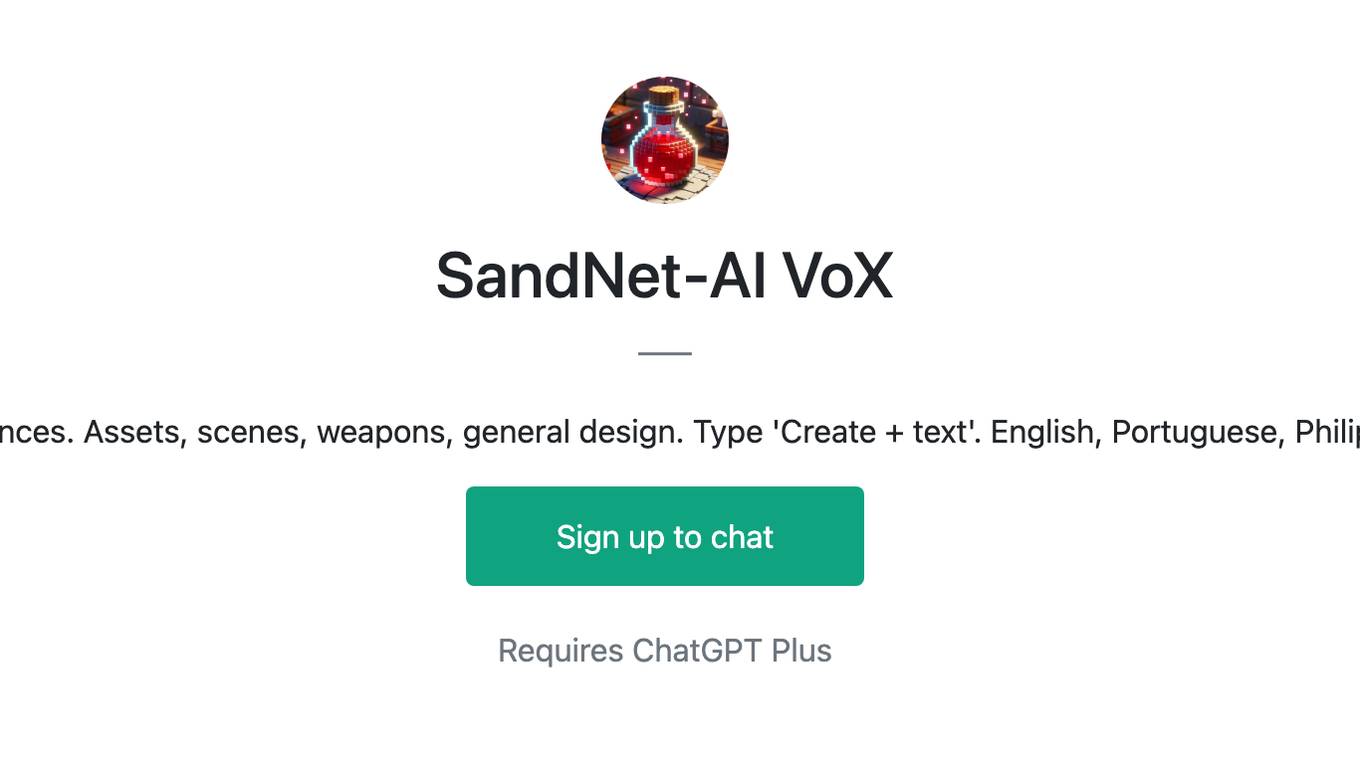
SandNet-AI VoX
Create voxel art references. Assets, scenes, weapons, general design. Type 'Create + text'. English, Portuguese, Philipines,..., +60 others.
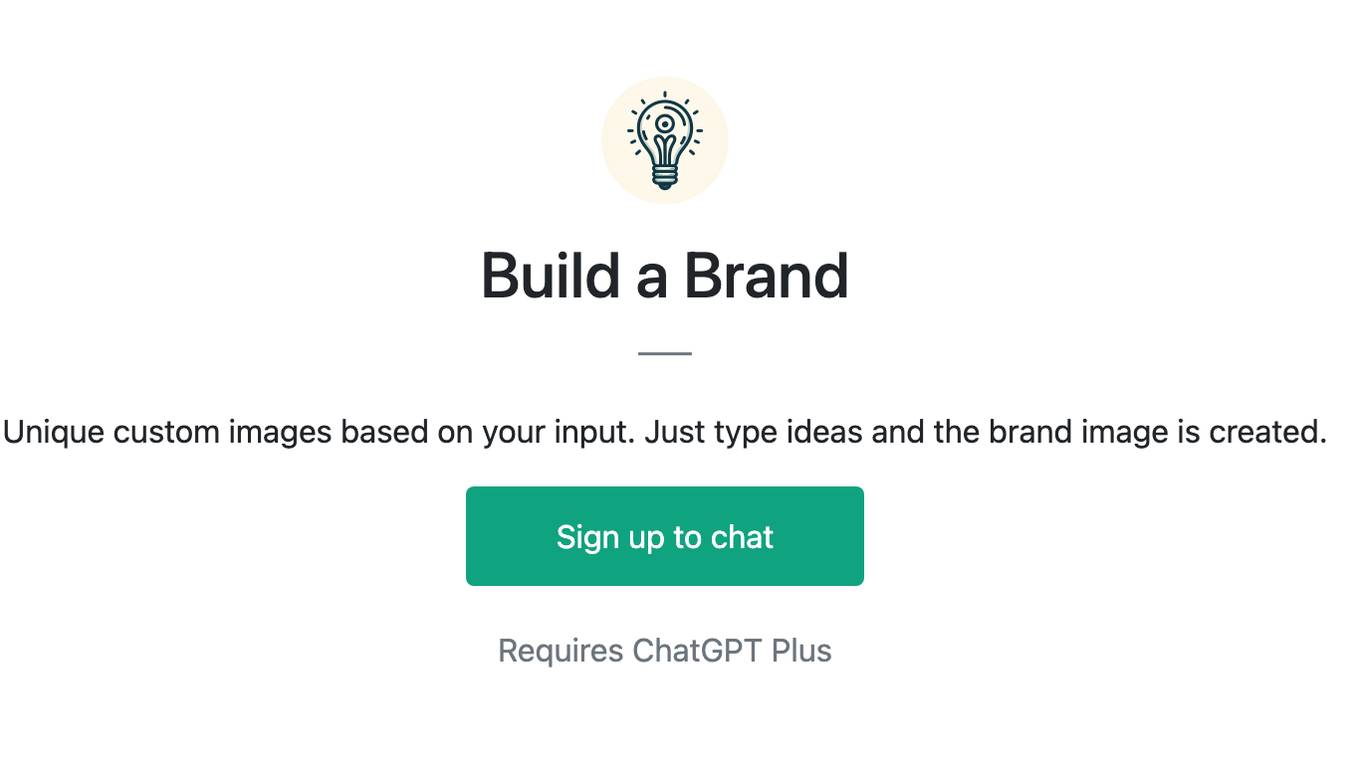
Build a Brand
Unique custom images based on your input. Just type ideas and the brand image is created.
